|
American
Automobile Industry World War One Era Motor Vehicles
This page updated
11-18-2023.
A
American Automobile Industry in World War Two Special Edition.
This page originally began as a photo page of
World War One Standard B Liberty trucks. However, once I started
working on the project, I realized I had taken photos over the last several years
that included other vehicles of the era. I decided to include them
also to give a more complete view of the early 20th Century military
vehicles that the American automobile and truck industry provided for
World War One. As can be seen below, the early 20th Century and
the World War One era was a transition from horse and mule drawn to
motorized vehicles.
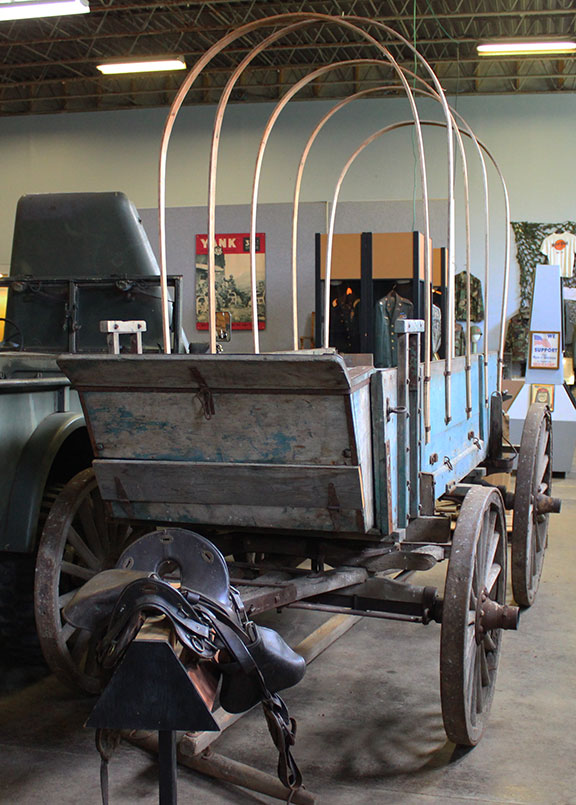
Studebaker started as a wagon manufacturer
in South Bend, IN in 1852 before making the conversion to trucks and
automobiles in the early 20th century. This Army Escort Wagon is
on display at the Museum of
the Soldier in Portland, IN. This type of wagon was built by the
Studebaker Wagon Company from 1899-1917. These were still being used at the time of
World War One. Author's photo.
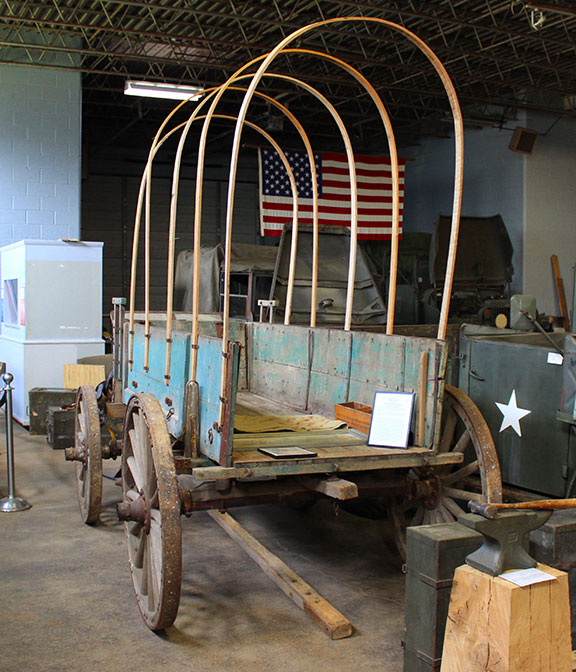
This type of Escort Wagon was pulled by four
mules and accompanied soldiers in the field by carrying their personal
belongings, food, and other essentials and suppliers. Author's
photo.
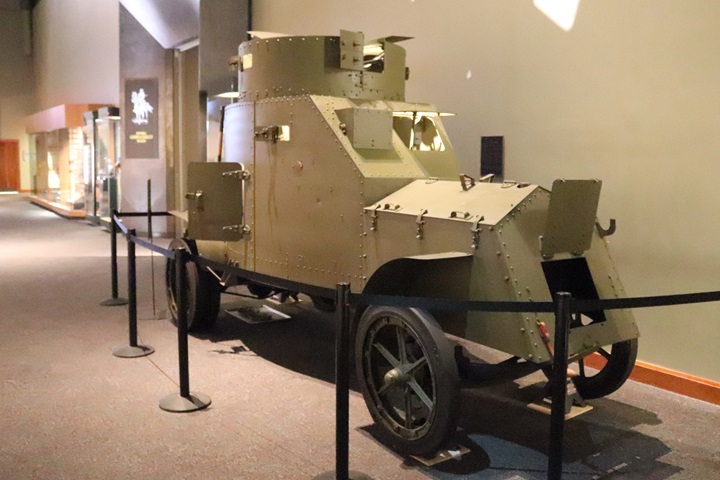
This 1916 White Armored Car was
on display at the National Infantry Museum at Fort Benning, GA, and was located outside the Armor and Calvary Gallery.
This vehicle was restored in six months' time by the personnel of the Armor
Museum Restoration Shop at Fort Benning. Author's photo.
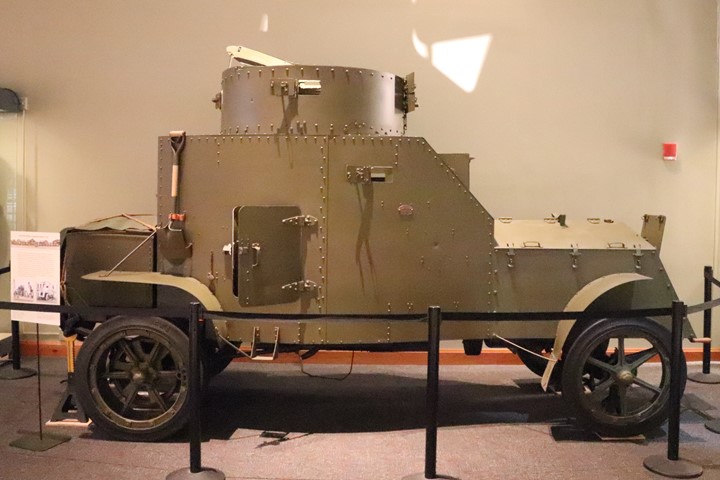
The armored plate was
installed on a 1916 White truck chassis at the Rock Island Arsenal, Rock Island, IL. The vehicle then became part of General Pershing's
Mexican Punitive Expedition to find Poncho Villa in Mexico. After
the Expedition was over, the 1916 White served at Fort Brown, TX.
In the 1930's, it was moved to the Aberdeen Proving Grounds where work
was being done on the next generation of armored cars. The vehicle
came to Fort Benning, with the closing of the outside displays at the
Aberdeen Proving Grounds during Army museum consolidation.
Author's photo.
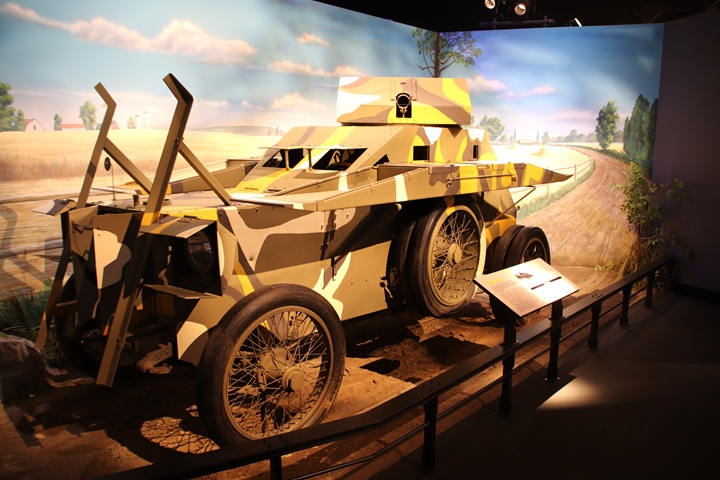
This 1916 King armored car is one of ten purchased by the
U.S. Marine Corps.
The chassis is a King Luxury Sedan, to which the armor plate was added by
the Armored Car Company of Detroit, MI. Both companies were
associated with early auto industry pioneer Charles Brady King.
Mr. King designed his own self-propelled carriage and on March 6, 1896,
he was the first person to drive an automobile on the streets of Detroit.
King vehicles were the first to have left-hand steering and he made the
first practical V-8 engine. He also assisted Henry Ford build his Quadricycle.
Two King armored cars were used for testing
and five were sent to assist Marines in Haiti and the Dominican
Republic. Another two were stationed at Galveston, TX. This
very rare vehicle is on display at the National Museum of the U.S.
Marine Corps in Triangle, VA. Author's photo.
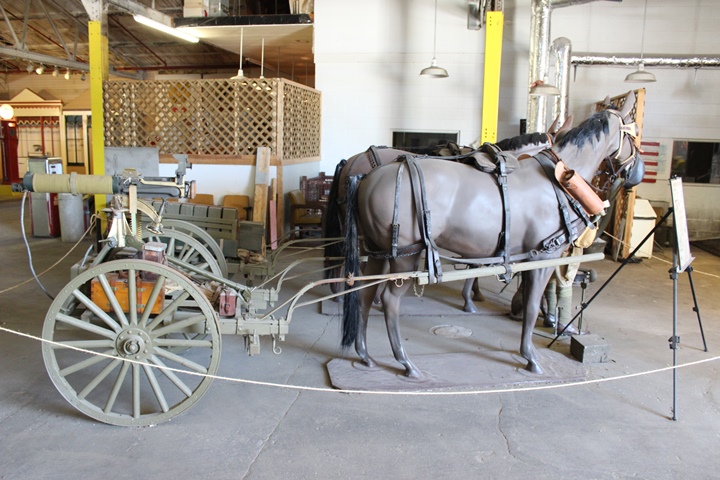
This World War One horse-drawn machine gun
cart was photographed at the former McClain Military Museum in Anderson,
IN. Author's photo.
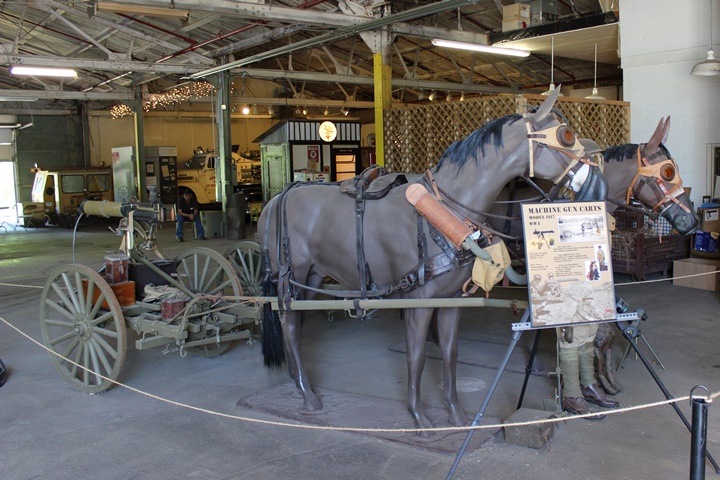
The owner is Ken Cerra Indianapolis, IN.
Author's photo.
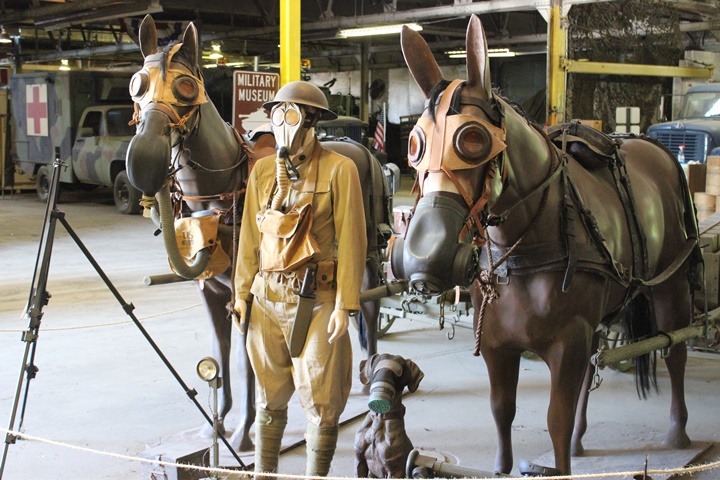
The display shows gas masks for not only the
soldier but the horses and the dog. Author's photo.
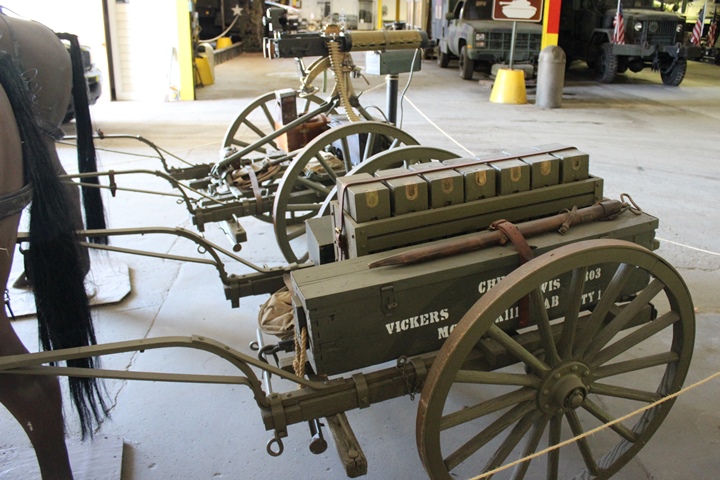
Author's photo.
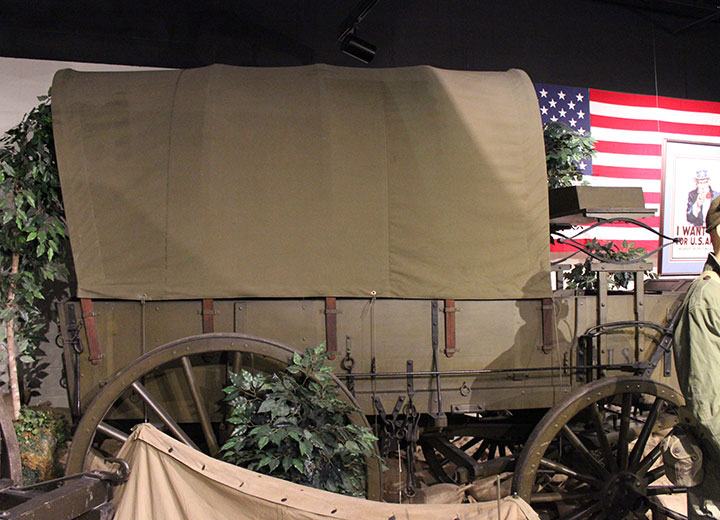
During 1917-1918 Studebaker produced 8,000
escort wagons for the war effort. This one is on display at the
Studebaker National Museum in South Bend, IN. Author's photo.
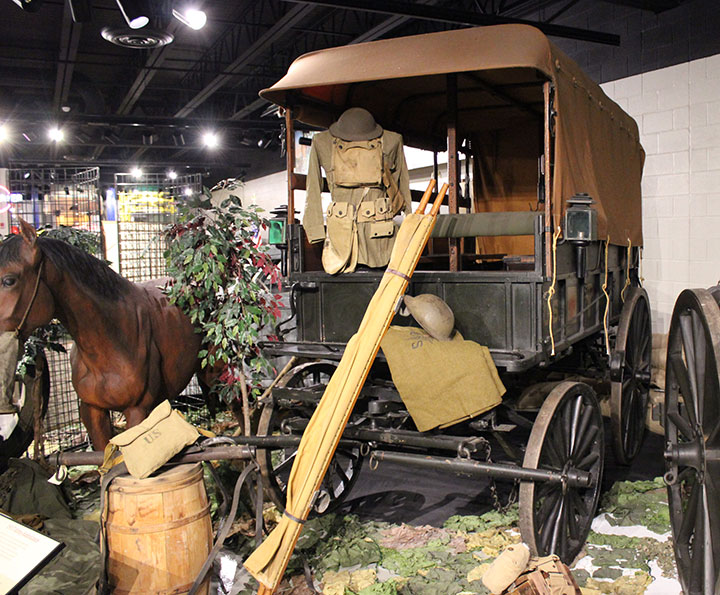
A 1917 Studebaker ambulance is also on
display at the Studebaker Museum. Author's photo.

This is one of
10,500 Studebaker-built 14 spigot water carts for use in
World War One. This particular example was built in 1917.
Author's photo from the Studebaker Museum.
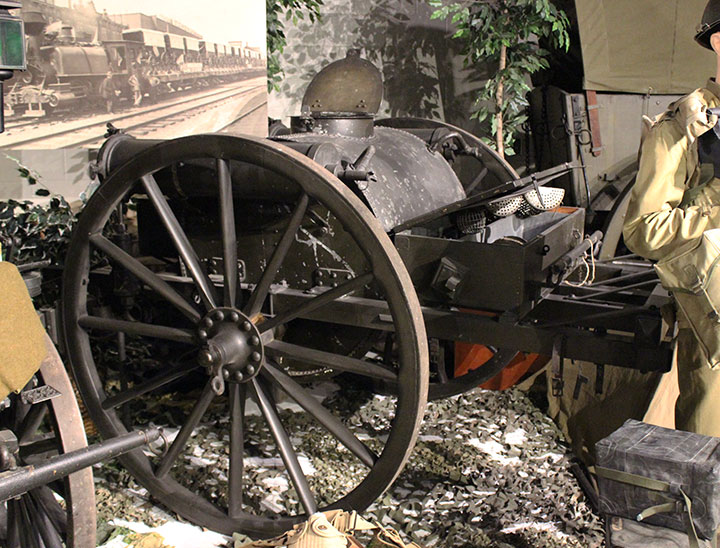
This 1914 water cart was one of 500 that
Studebaker built for the British during World War
One. Author's photo from the Studebaker Museum.
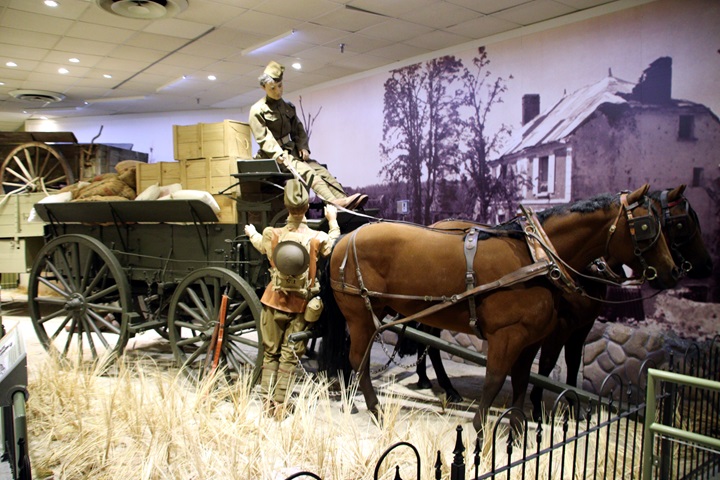
This
Army escort wagon is on display at the Army Transport Museum at Fort
Eustis, VA. While the horses were the propulsion of the wagon and
the supplies it was carrying, the horses themselves needed to be fed.
Each horse required 12 pounds of grain and 14 pounds of hay per day.
Author's photo.
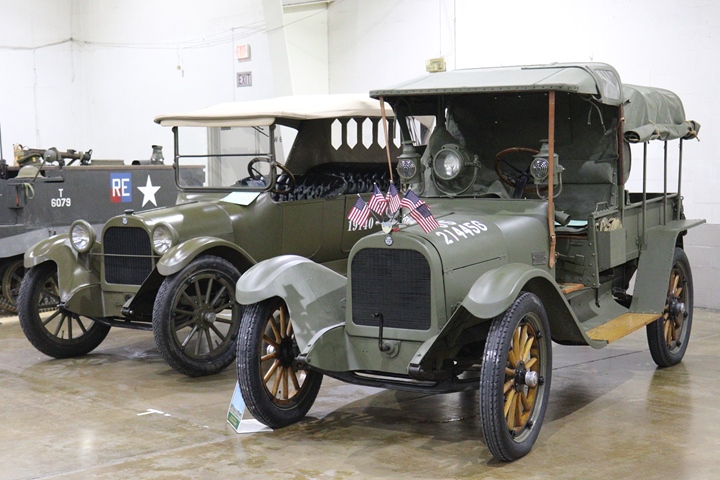
Shown here are two Dodge Brothers World War
One era vehicles. On the left is a 1918 Army staff car and on the
right is a 1918 light repair truck. Author's photo from the 2019 MVPA National Convention.
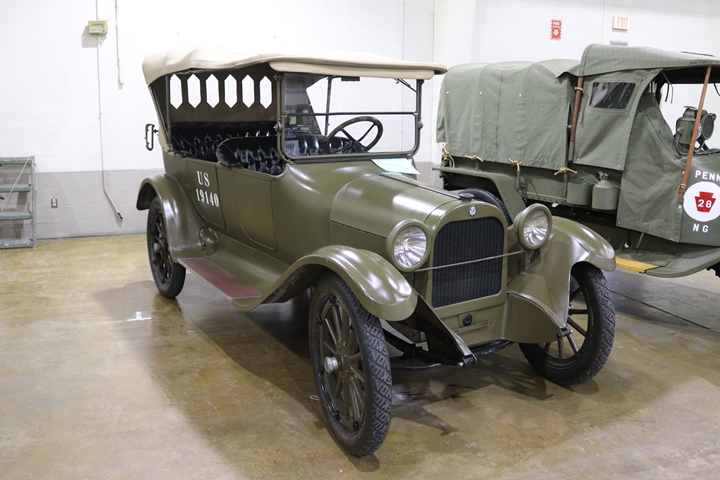
This 1918 Dodge staff car is USA number
119140, owned by Mark Ounan. Author's photo.
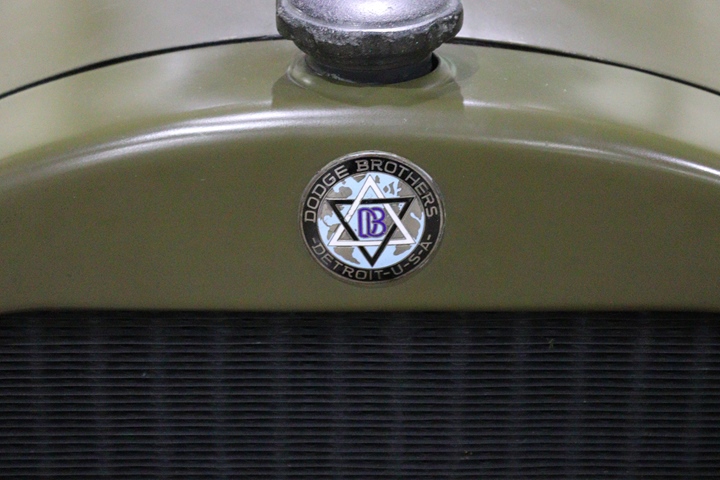
Author's photo.
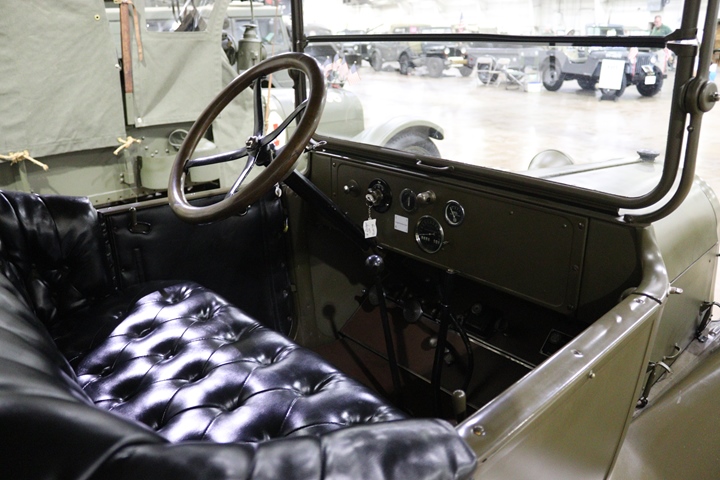
Author's photo.
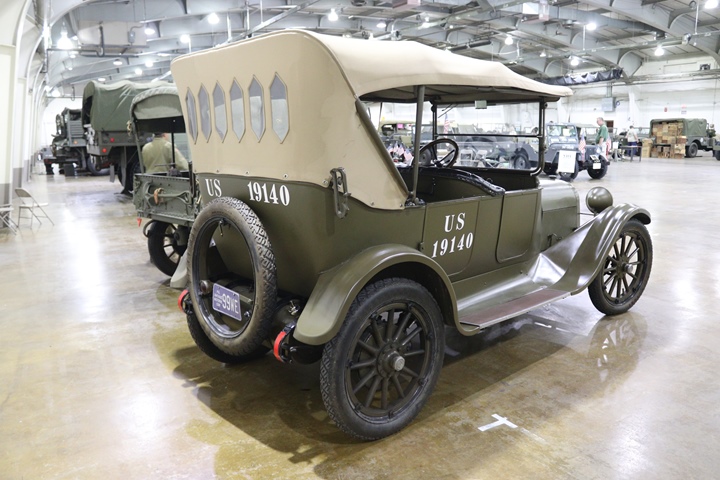
Author's photo.
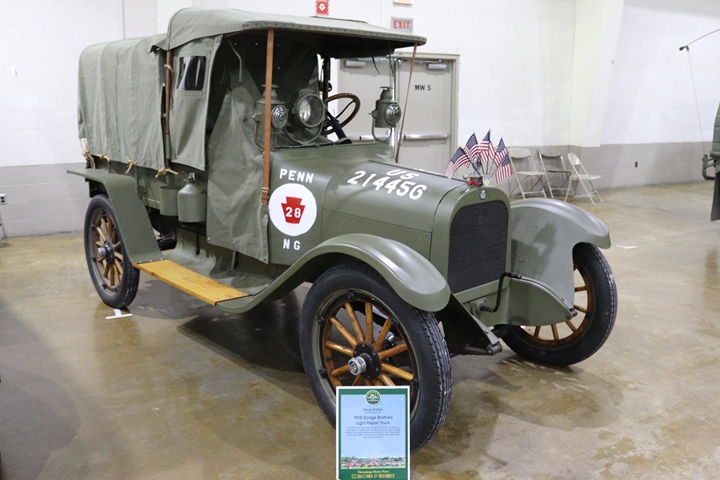
This Dodge Brothers light repair truck is
one of four still in existence out of the 1012 originally built.
It is owned by Doug Walters. Author's photo.
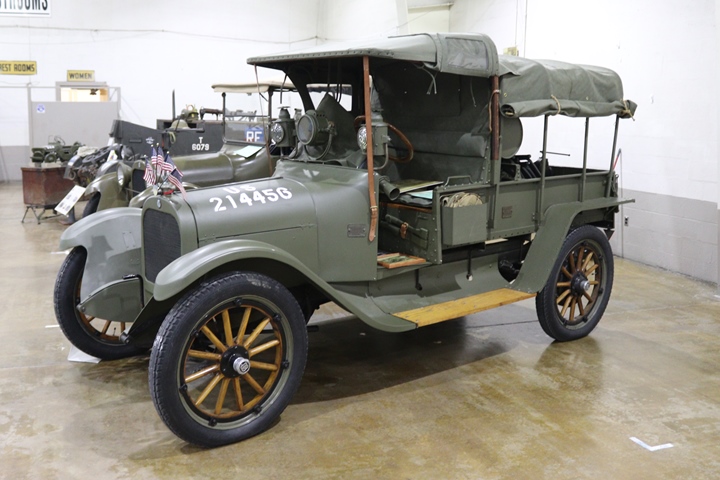
Author's photo.

Author's photo.

This 1919 Cadillac Type 57 is on display at
the
Jackson Barracks Museum in New Orleans, LA. Over 2,100 of
the 2,500 built were sent to Europe. The vehicles were built specifically for officer use. This one was given to the
Louisiana Army National Guard after
World War One and was used until the early 1930s. Author's photo.
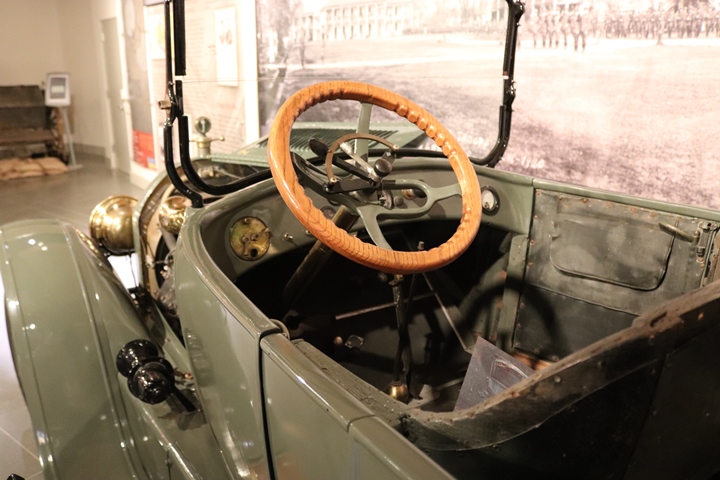
Author's photo.
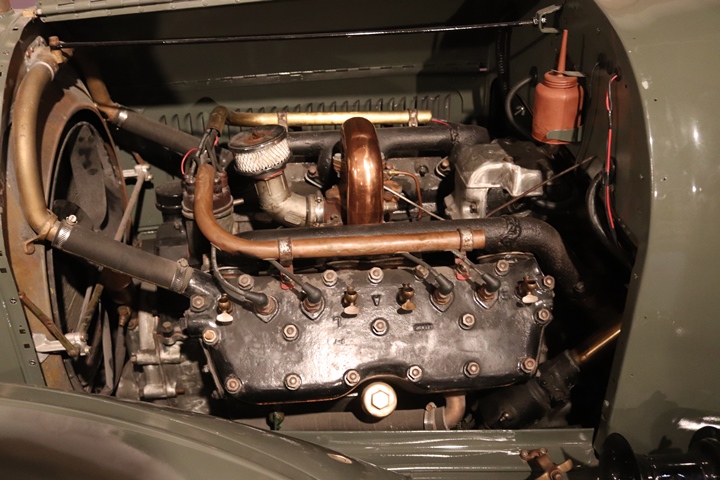
Cadillac was the first automotive company to
introduce the V-8 engine into production. Author's photo.
The Ford Model T:
This is one of the more common World War One
era
vehicles found on display in museums. Ford built several versions
of the 30,734 Model Ts used in World War One. 16,899 were passenger cars, 7,490
were trucks, 600
were chassis only, and 5,745 were ambulances. The Red Cross
purchased an
additional 2,397 vehicles for ambulance use.
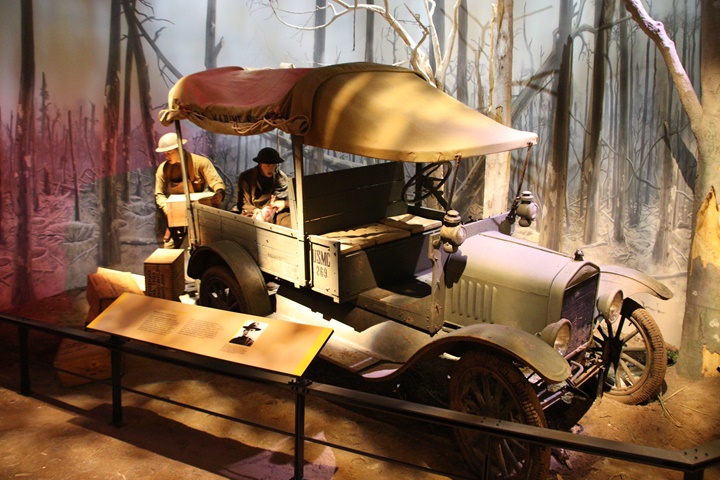
This Ford Model T truck is on display
at the National Museum of the U.S. Marine Corps. The Marines were
not authorized any motorized vehicles in Europe during World War One.
This vehicle represents and is marked like the one Model T truck that
was donated to the Corps by three private citizens. It was known
to the Marines as "Elizabeth Ford." Author's photo.
Ford built another 20,652 vehicles for the war
effort. 18,039 of them were shipped to France for
American use. Another 8,500 Ford chassis shipped to the French for
them to install their own bodies.
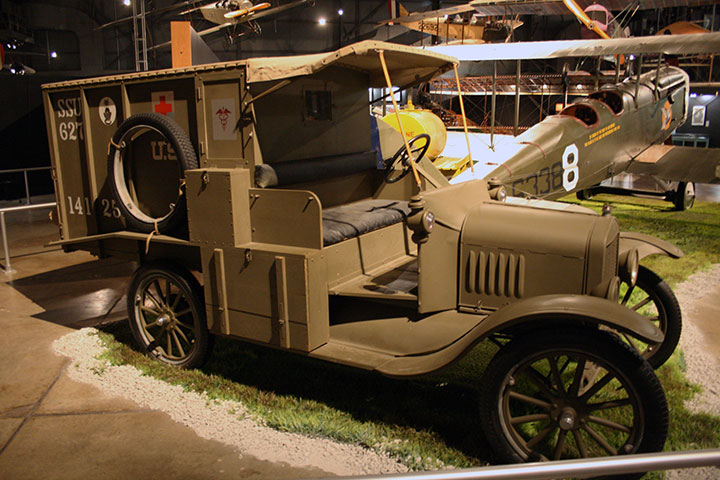
This Model T ambulance version is on display
at the National Museum of the United States Air Force. Author's
photo.
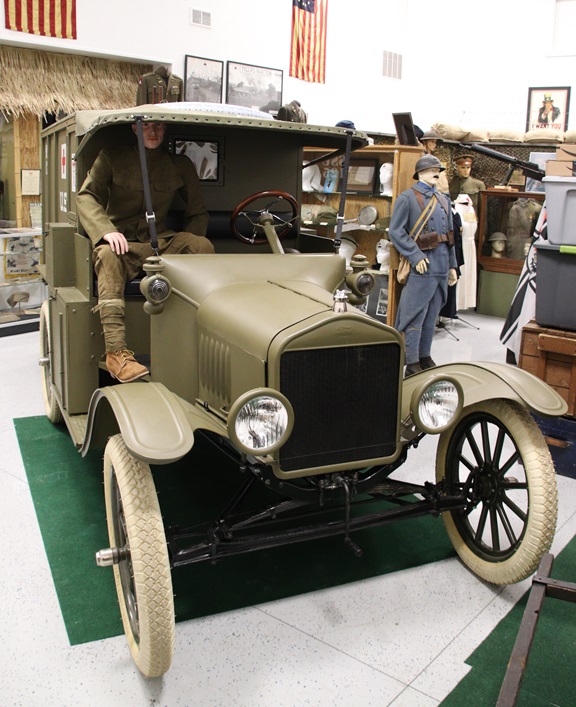
This
1917 Model T has been restored to represent a World War One ambulance.
This was photographed at the Michigan Military Heritage Museum at its
former location in Grass Lake, MI. In late 2021 the museum moved
to Jackson, MI. Author's photo.
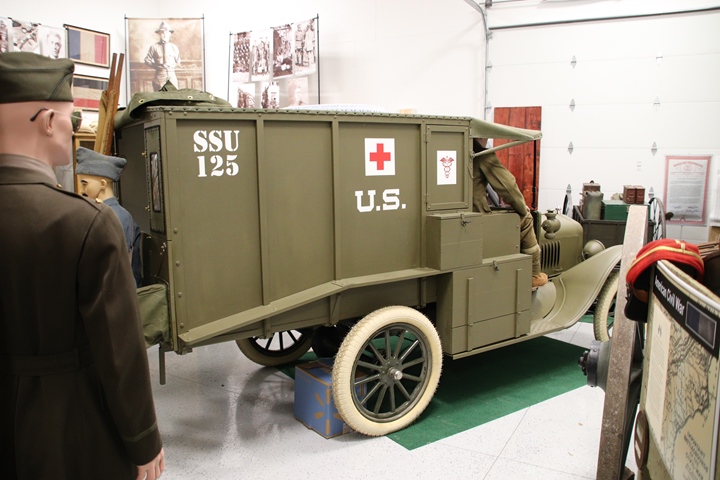
Author's photo.
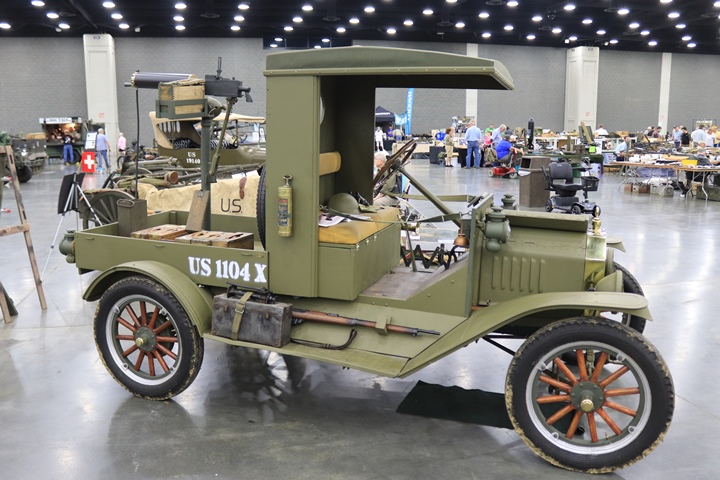
This 1915 Model T has been converted into a
light patrol vehicle. It was on display at the 2018 MVPA National
Convention in Louisville, KY. Author's photo.
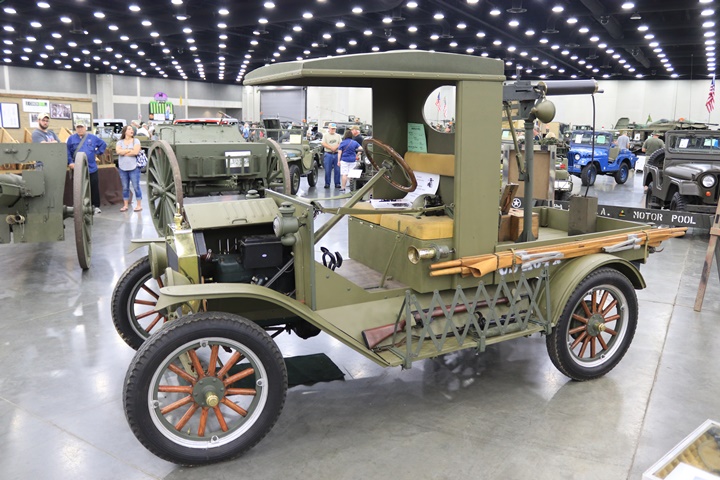
Author's photo.
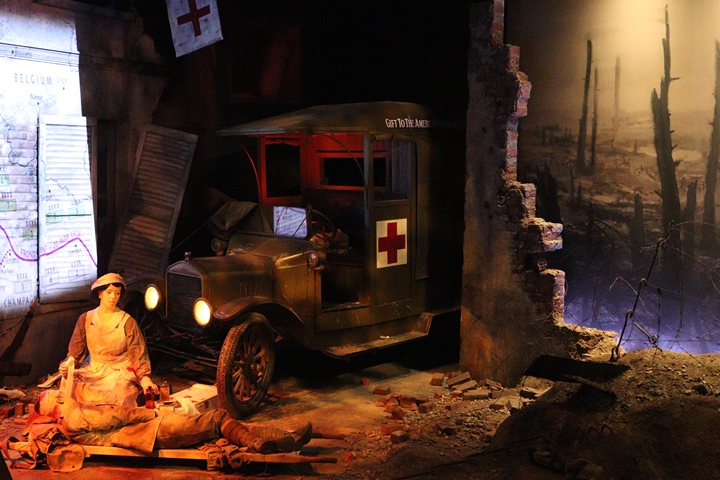
This diorama at the American Heritage Museum
in Hudson, MA depicts one of the 2,397 Ford Model Ts used by the Red
Cross. Author's photo.
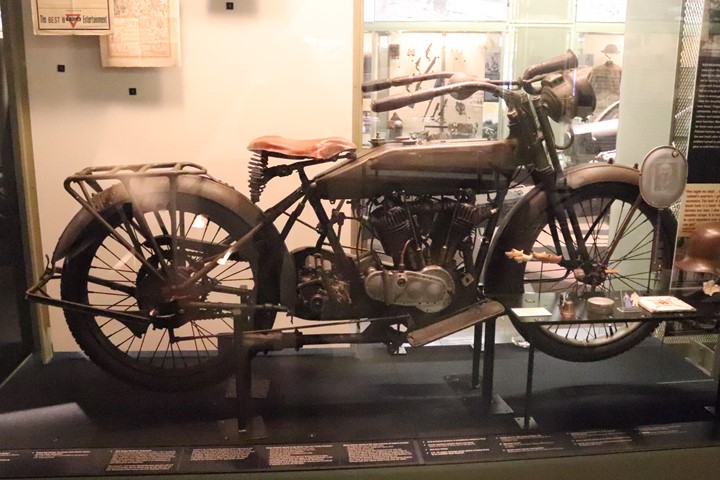
This original 1917 Harley-Davidson served
with American military forces in Europe during the First World War.
It is on display at the National WWI Museum and Memorial at Kansas City,
MO. During World War One, Harley-Davidson was contracted by the
U.S. military for 8,125 motorcycles. Supposedly, the first
American soldier to enter Germany after the signing of the Armistice was
riding a Harley-Davidson motorcycle. Author's photo.
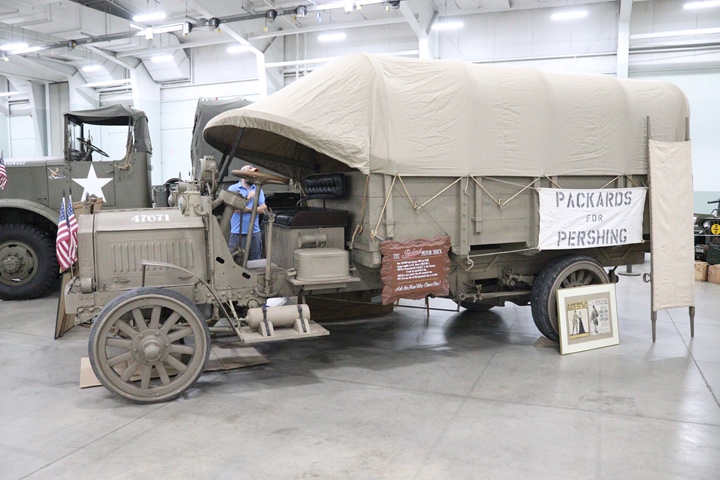
This Packard-built
three-ton truck was on display at the 2019 MVPA convention.
The Packard Motor Car Company was contracted
for 4,800 three-ton trucks during World War One.
While Packard was a larger producer of trucks for World War One, during
World War Two it did not provide any motor vehicles. It instead
manufactured aircraft and marine engines.
Author's photo.
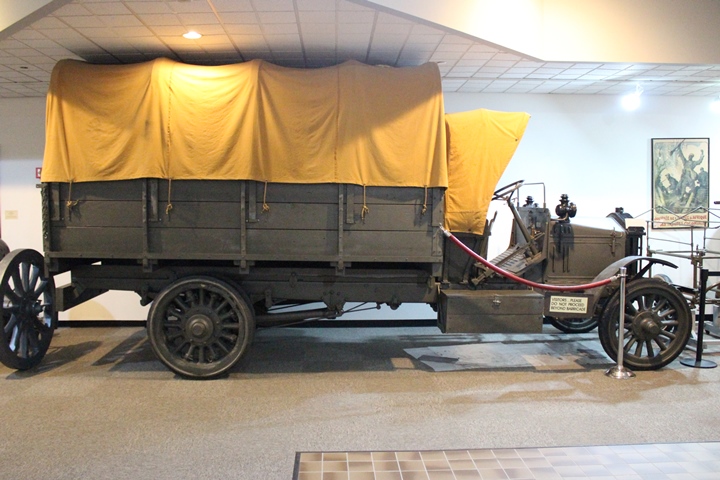
This very rare
Pierce-Arrow 5-ton Model R9 truck was built in January 1919. It
was part of a large number of Pierce-Arrow trucks ordered by the French
during World War One. With the end of the war in November 1918,
this vehicle was sold on the civilian market in the United States.
This truck was photographed at the Virginia War Museum in Newport News,
VA. Author's photo.
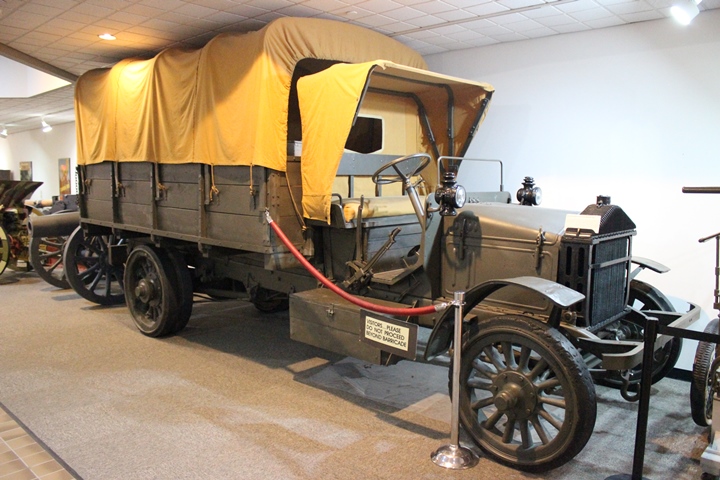
Pierce-Arrow also had
truck orders from the U.S. military. The military ordered
2,200 1-1/2-ton trucks and 1,000 5-ton trucks from the company. Author's photo.
Class B Standard Liberty Motor
Trucks: As noted above, the original concept for this page was
just the following five vehicles. The additions from
the era gives a better overview of many different motor and non-motor
vehicles that were supplied to the American military during the World
War One era.
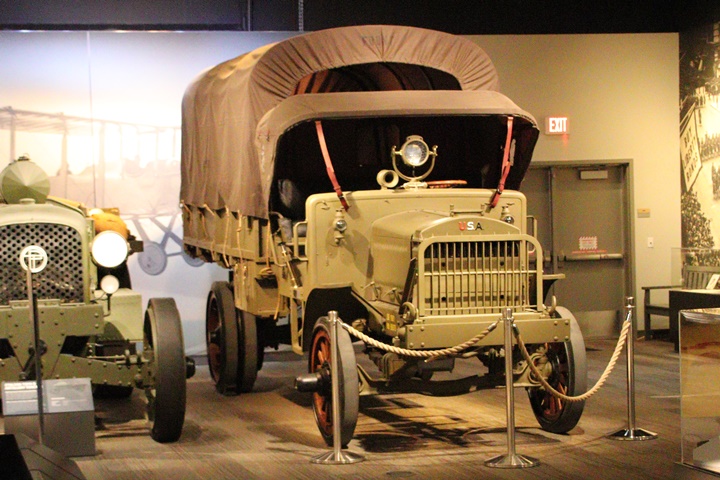
The National Museum of Military Vehicles in
Dubois, WY has this Liberty truck on display. Note the red, white, and
blue "USA" on the front grill. This adds a little color to the
otherwise bland paint color. Author's photo added
11-18-2023.
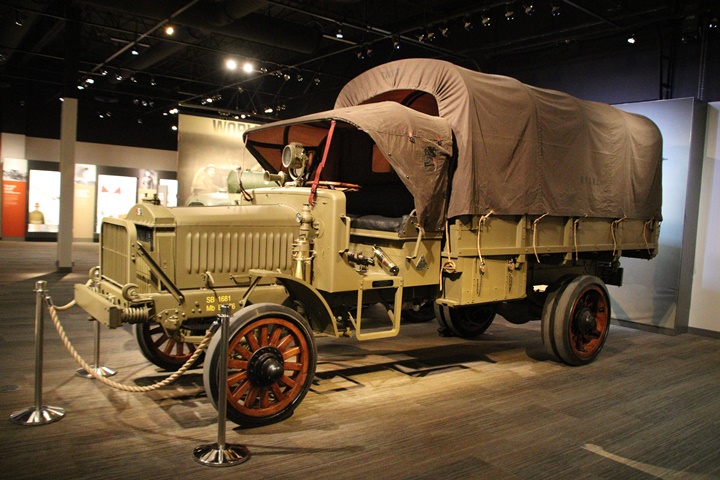
The wheel spokes have also been painted on
this vehicle. Author's photo added 11-18-2023.
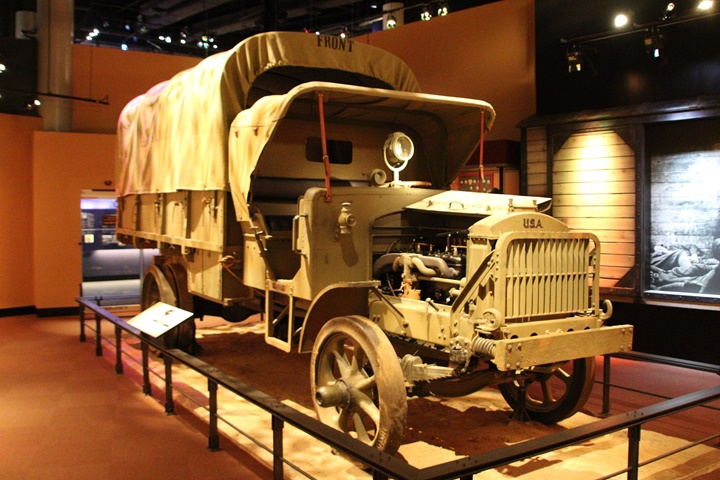
This Liberty second series truck is on display at the National Museum of
the U.S. Marine Corps. Author's photo.
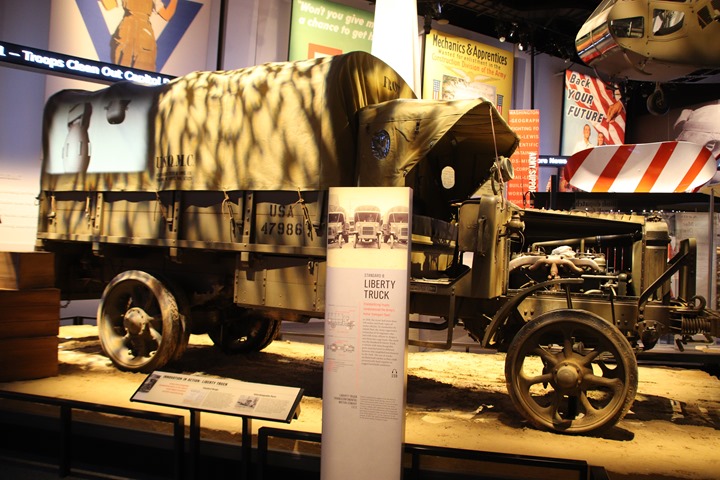
Due to the identical and
obnoxious yellow, mustard colored lighting, this Liberty Truck at the
National Museum of the United States Army looks almost identical to the
Liberty Truck at the Marine Corps Museum. Author's photo.
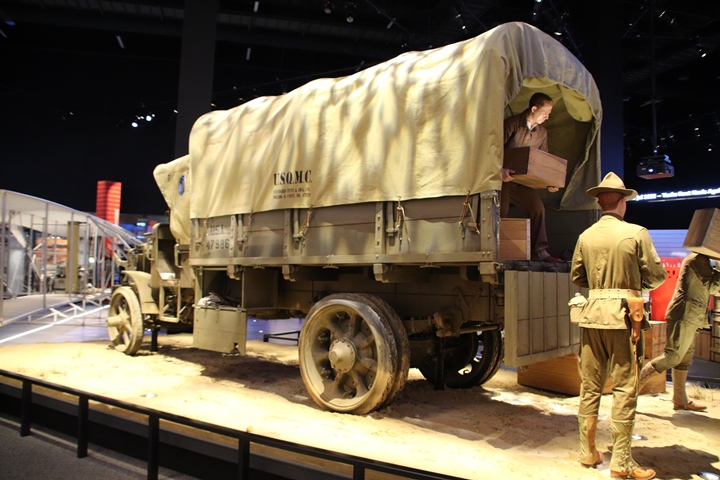
Note both the front and
rear wheels and tires, and how they differ from the ones on the Liberty
Truck at the Army Transportation Museum below. Author's photo.
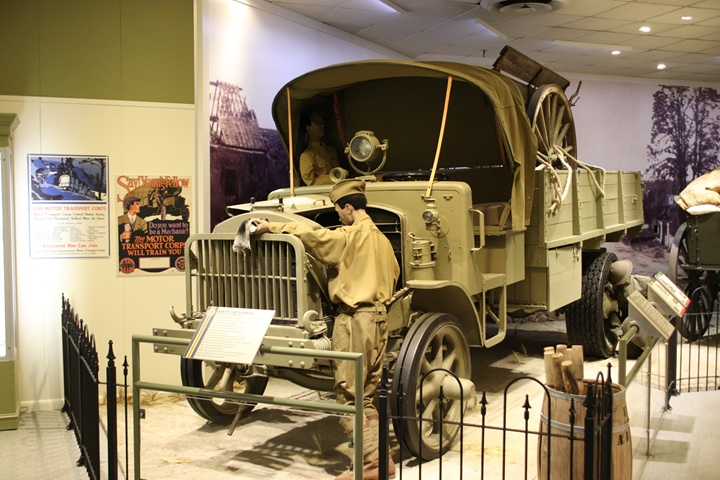
The front tires are two
sections of rubber compared to the one piece on the previous two trucks. Author's photo.
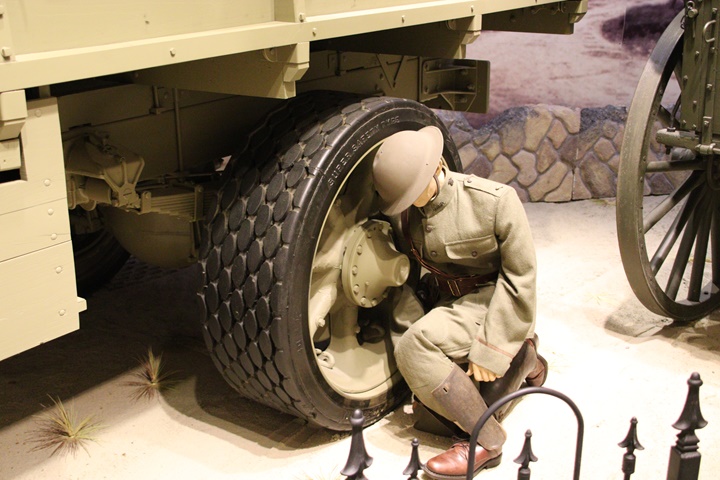
The rear is a treaded
design unlike the divided smooth tires of the previous two trucks.
Author's photo.
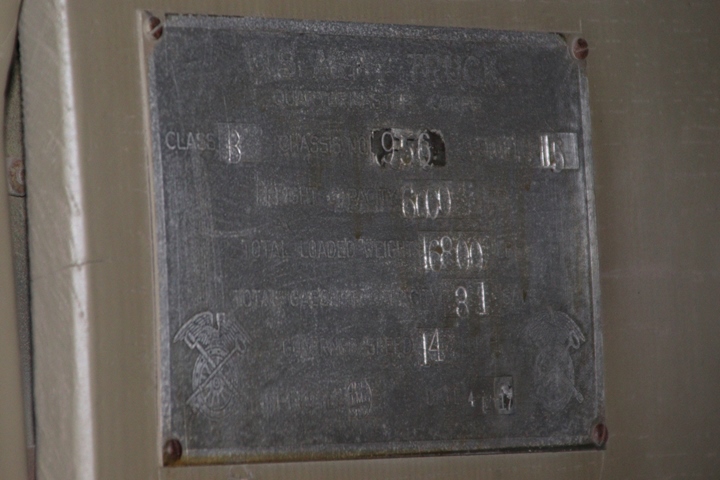
The Liberty Class B
Truck at the Army Transportation Museum was built by manufacturer #5 and
is serial number 956. Author's photo.
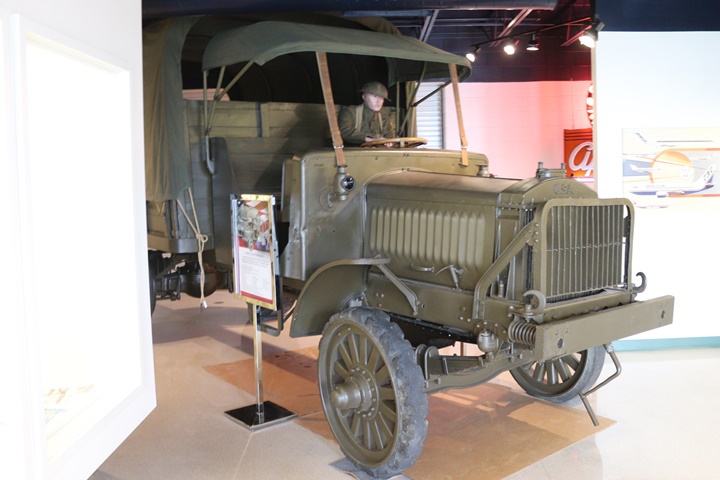
This particular Liberty
Truck, on display at the Allen County Museum in Lima, OH, was built by Gramm-Bernstein in Lima, OH.
Note that the passenger side front tire has a tread while the driver's
side is a smooth hard tire. Author's photo.
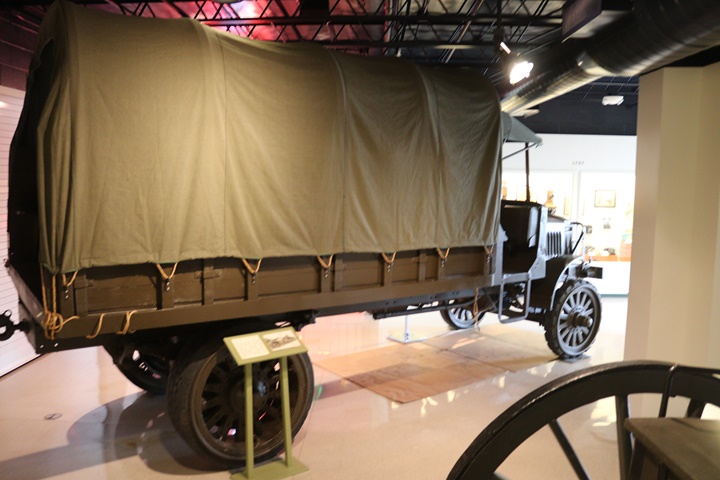
Gramm-Bernstein built
the prototype Liberty Truck, and then made 1,000 production versions.
Author's photo.
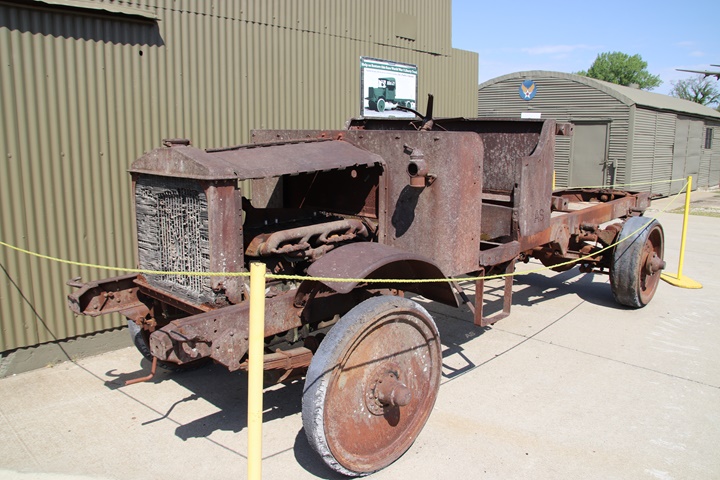
This derelict Liberty
Truck came to the Indiana Military Museum at Vincennes, IN in 2021.
Currently, it is awaiting restoration while funding is raised for the
project. Author's photo.
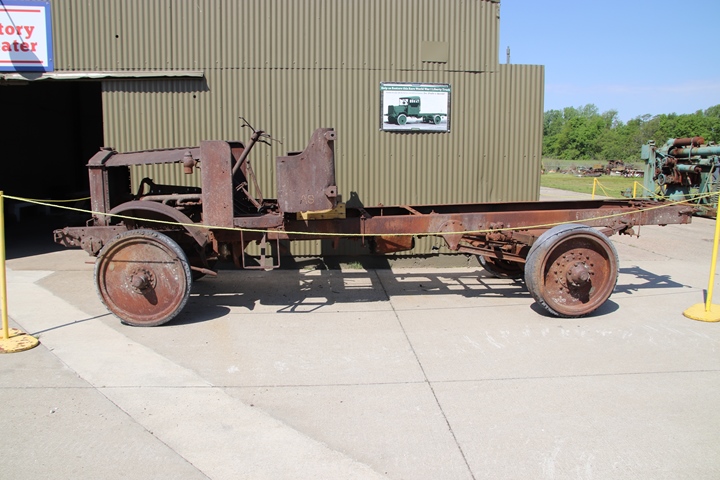
This is the only
Liberty Truck I have found that has the solid wheels and not the spoke
type. Author's photo.
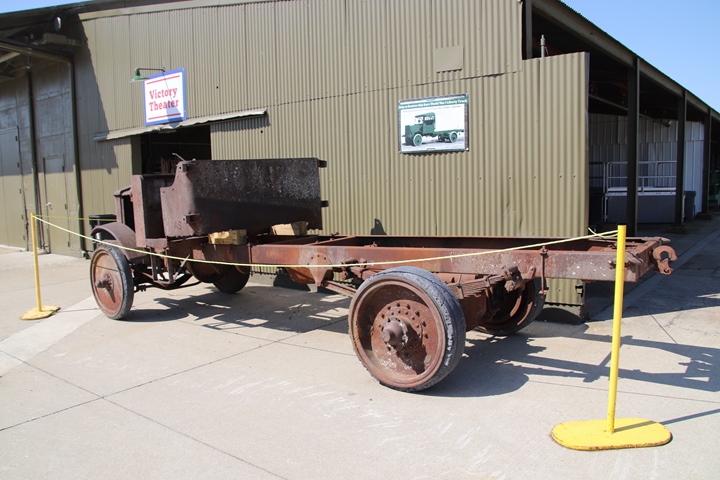
Author's photo.
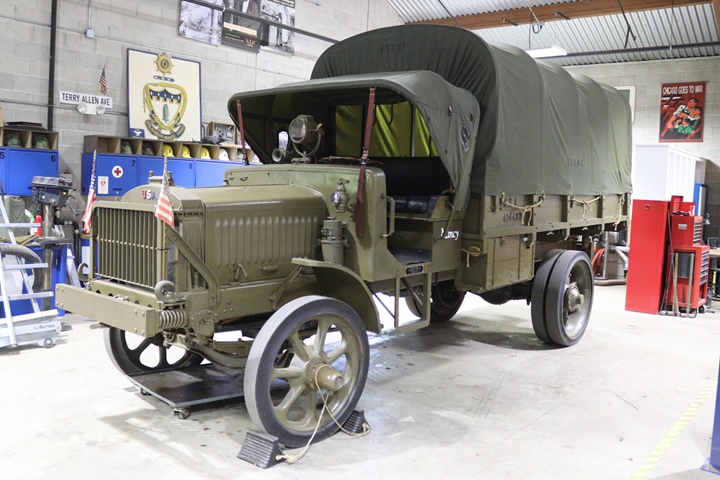
When the Liberty Truck at the Indiana Military Museum completes its
restoration, it will look like this one at the First Division Museum in
Wheaton, IL. This one has been restored to operating condition. Author's photo.
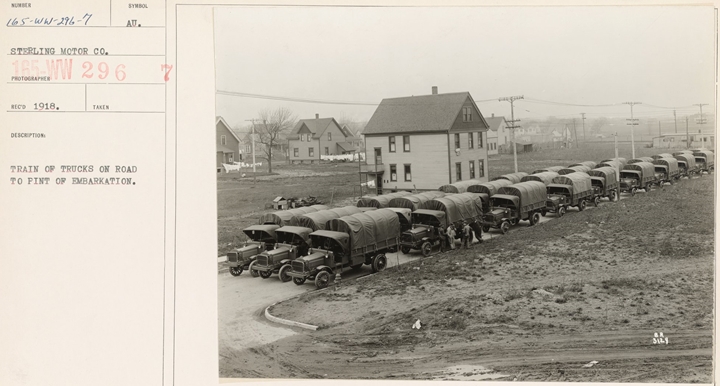
These two 1918 photos
show nine rows of three Sterling Liberty trucks lined up in a partially
developed residential area of Milwaukee, WI. Several of the
Sterling Motor Truck Company can see talking next to the nearest truck
in the second row. Something not seen much anymore is laundry
drying on clotheslines at two houses in the background. Photo from
the National Archives.
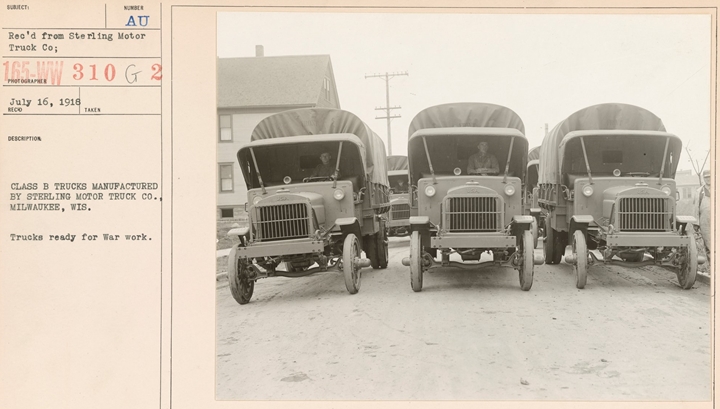
This photo shows most of
the employees are in the trucks, with the exception of the one on the right.
These photos were taken on July 16, 1918. There were two series of
Standard B trucks. These trucks are of the first series because they have
electrical lighting. Wires for the electrical current have been
routed from holes below the headlights. The second series
eliminated the electrical lighting and the associated battery,
distributor and generator. Photo from the National Archives.
-126w-1.jpg)
At least 28 Brockway-built Liberty trucks
are shown in this posed photo.
These trucks are of the first series
because they have electrical lighting. Wires for the electrical
current have been routed from holes below the headlights. The
second series eliminated the electrical lighting and the associated
battery, distributor, and generator.
Photo courtesy of the National Archives via Jeff Lakaszcyck added
11-18-2023.
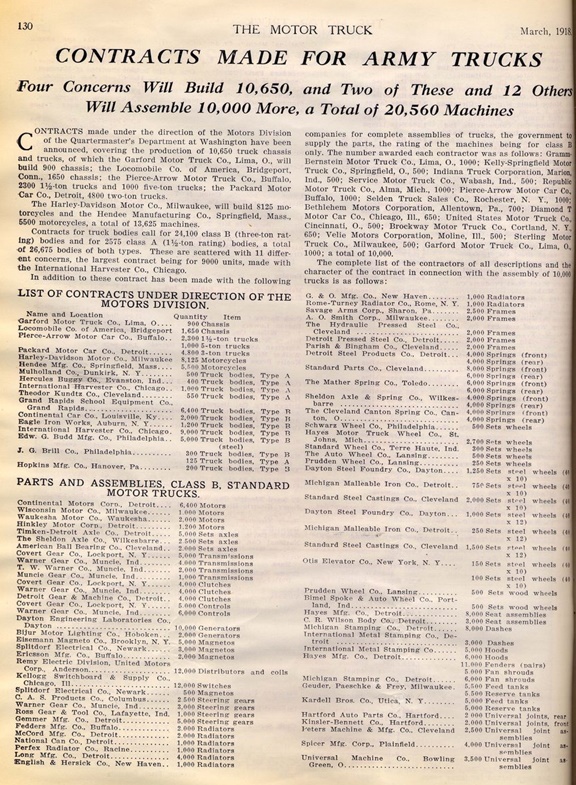
This two page document shows the companies not only contracted to make
the Class B, Standard Motor Truck and its components, but trucks from
other manufacturers as well. Document courtesy of Warren
Richardson.
Of the fifteen companies listed as suppliers
of the Class B truck, only three were still in business when World War
Two arrived. They were Brockway, Diamond T, and Sterling.
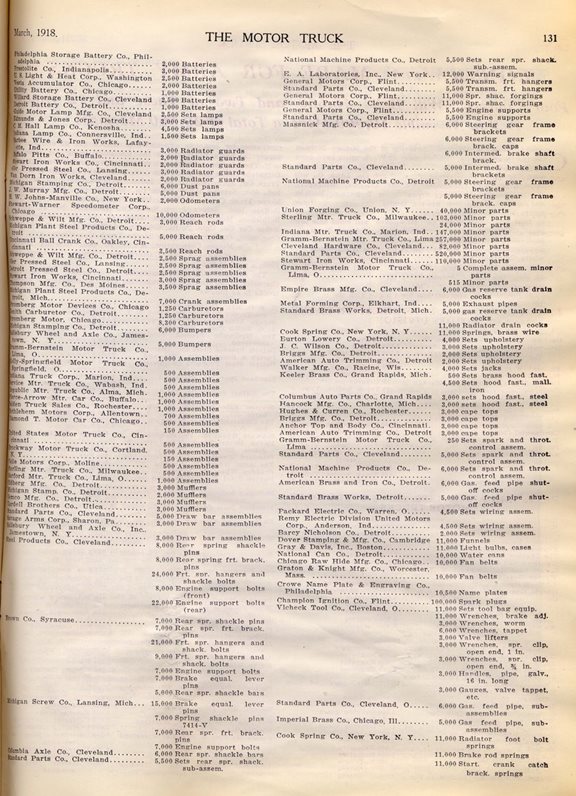
Document courtesy of Warren Richardson.
Number of Standard B Liberty Trucks Built by Manufacturer
Information for this table comes from two different sources.
They are: "The Complete Encyclopedia of Commercial
Vehicles" by G.N. Georgano and G. Marshal Hall published in 1979
by Krause Publications, and "US Military Wheeled Vehicles" by
Fred Crismon published by Crestline in 1983. Source
material for this table was provided by of Warren Richardson. |
|
Truck Manufacturer |
Contracted Amount |
Number Built |
Source |
|
Bethlehem |
700 |
675 |
"The
Complete Encyclopedia of Commercial Vehicles" |
|
Brockway |
650 |
587 |
"The
Complete Encyclopedia of Commercial Vehicles" |
|
Diamond T |
650 |
638 |
"The
Complete Encyclopedia of Commercial Vehicles" |
|
Garford |
1,000 |
978 |
"US
Military Wheeled Vehicles" |
| Gramm
Bernstein |
1,000 |
1,000 |
"The
Complete Encyclopedia of Commercial Vehicles" |
|
Indiana |
500 |
475 |
"US
Military Wheeled Vehicles" |
|
Kelly-Springfield |
500 |
301 |
"US
Military Wheeled Vehicles" |
|
Packard |
? |
5 |
"US
Military Wheeled Vehicles" |
|
Pierce Arrow |
1,000 |
975 |
"US
Military Wheeled Vehicles" |
|
Republic |
1,000 |
967 |
"US
Military Wheeled Vehicles" |
|
Selden |
1,000 |
1,000 |
"The
Complete Encyclopedia of Commercial Vehicles" |
|
Service |
500 |
337 |
"US
Military Wheeled Vehicles" |
|
Sterling |
500 |
479 |
"The
Complete Encyclopedia of Commercial Vehicles" |
| US |
500 |
490 |
"US
Military Wheeled Vehicles" |
| Velie |
500 |
455 |
"US
Military Wheeled Vehicles" |
|
Total |
10,000 |
9,362 |
|
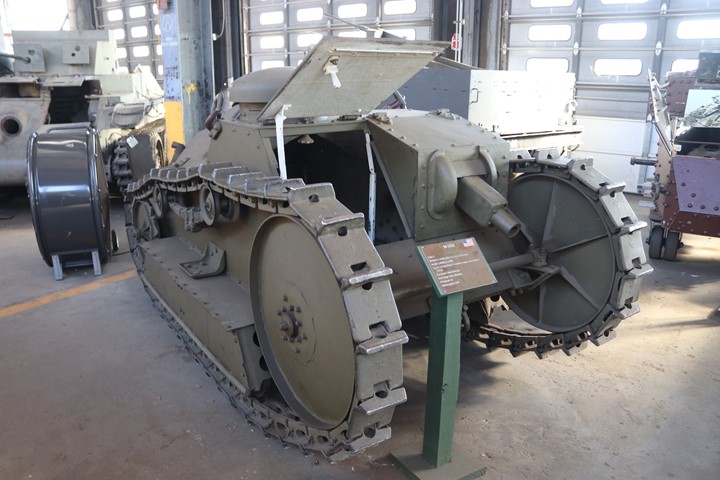
Ford Motor Company built 1,690 M4A3 Sherman
Tanks and 1,038 M10A1 Tank Destroyers during World War Two. It
acquired previous experience in building tanks during 1918 at the end of
World War One. This is one of two surviving Ford-built Model 1918
tanks out of fifteen that were built. The vehicle was designed in
two days, the first prototype was built in three weeks, and a 222 foot
by 530 foot building for mass production of the vehicle was built in 30
days. Ford was given a contract to build 15,000 units at a
rate of 100 per day. The end of World War One prevented the tank
from going into production. Author's photo from the National Armor
and Cavalry Tank collection at Fort Benning, GA.
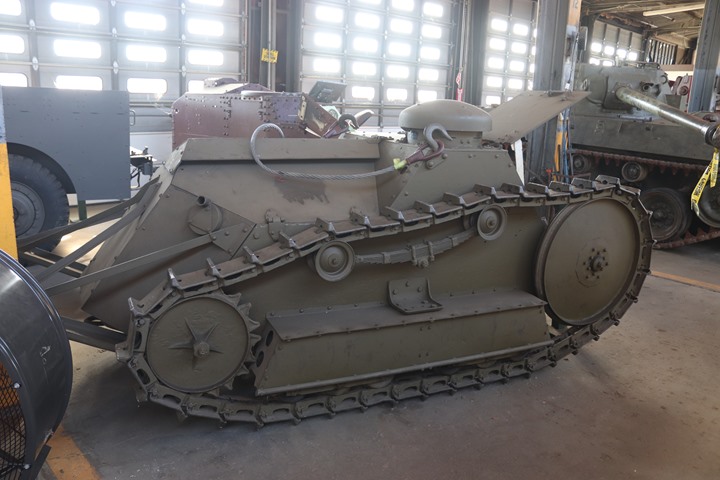
The Ford 1918 tank was powered by two Ford
Model T engines and was armed with a .30 caliber machine gun. It
had a two man crew. Author's photo from the National Armor and
Cavalry Tank collection at Fort Benning, GA.
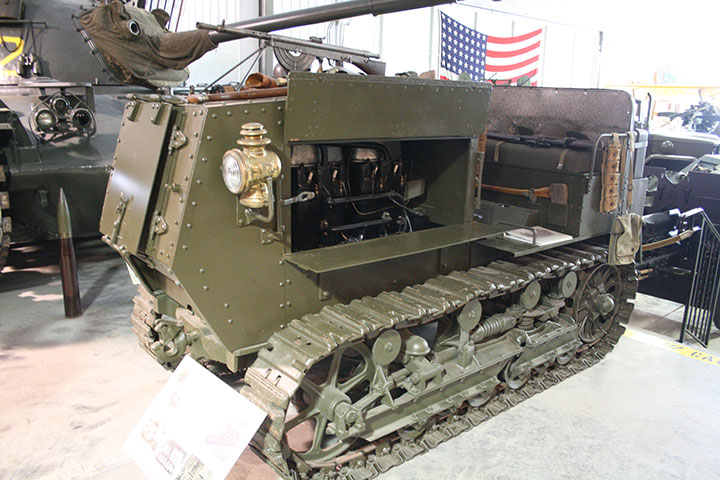
This militarized version of the Holt Tractor
was built by the Reo Motor Car Company of Lansing, MI in 1917 as a 5-ton prime mover for artillery in World
War One. It was photographed at the former Ropkey Armor Museum in Indiana. The
museum is now closed; and the location of the tractor is unknown. The
Tractor has a 45 hp engine. Holt later evolved into Caterpillar.
Author's photo.
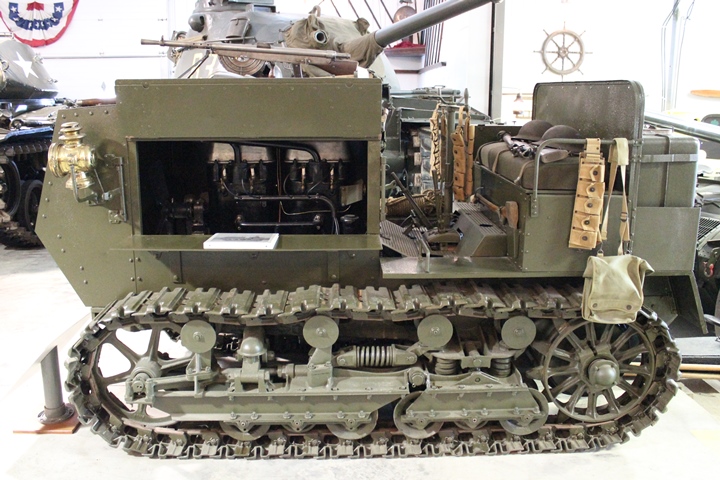
Author's photo.
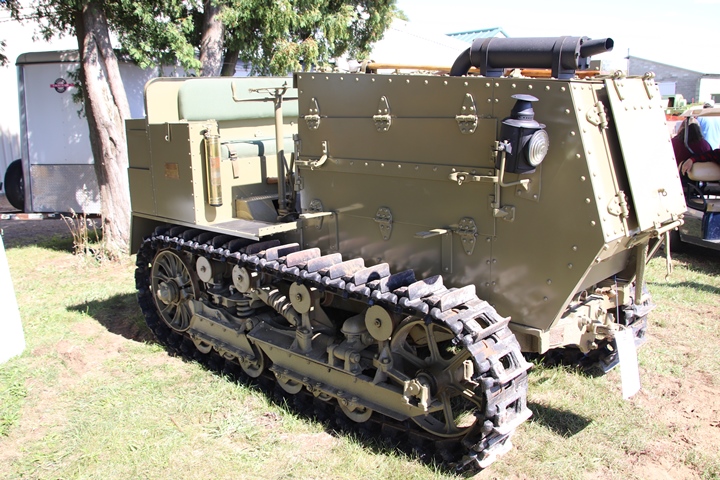
This is another Holt Armored Tractor that
was on display at the 2022 Historical Construction Equipment Museum
Convention. This one was built by the Maxwell Motor Company of New
Castle, IN. This tractor is currently owned by the Bowers Family
of Wintersville, OH. In looking at the information placard, this
was previously part of the former Ropkey Armor Museum. Author's
photo added 9-28-2022.
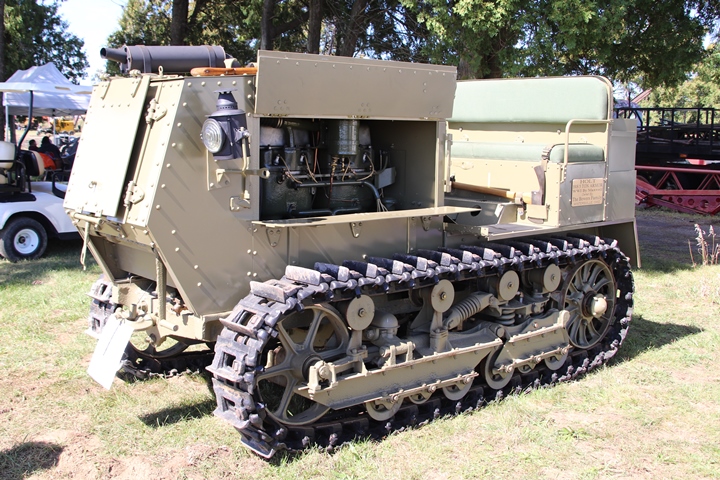
Author's photo added 9-28-2022.
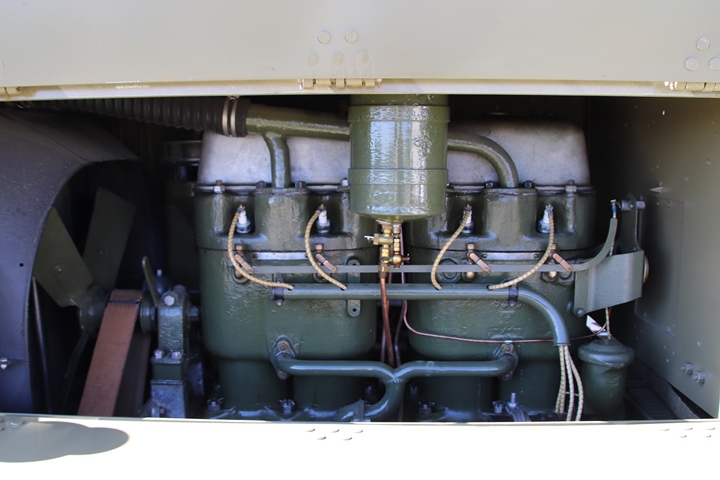
Author's photo added 9-28-2022.
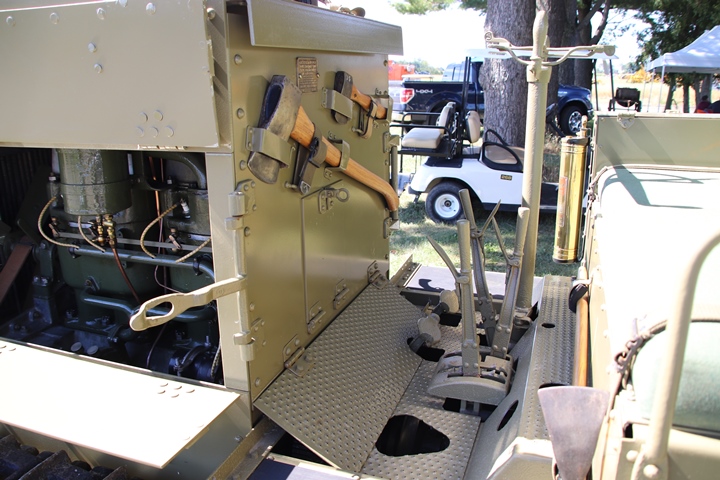
Author's photo added 9-28-2022.
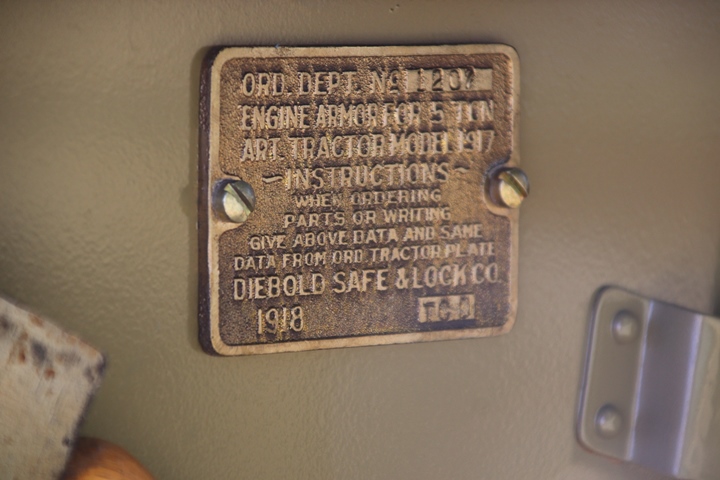
The Diebold Safe & Lock Company of Canton,
OH provided the armor plate for the engine. In World War Two, it
produced and installed the armor plate on the White-built halftracks.
Of interest is the fact that while the engine is protected with armor
plate, the driver is not. Author's photo added 9-28-2022.
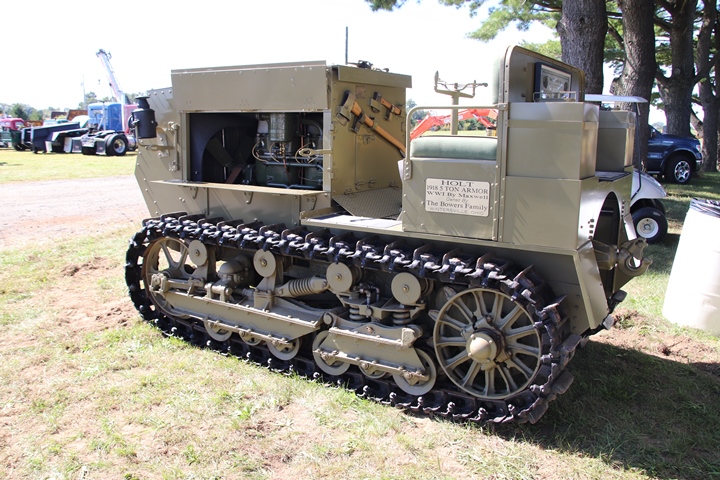
Author's photo added 9-28-2022.
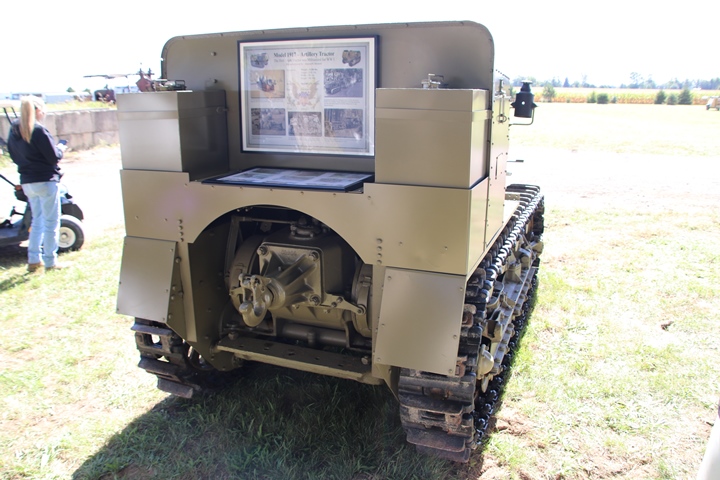
Author's photo added 9-28-2022.
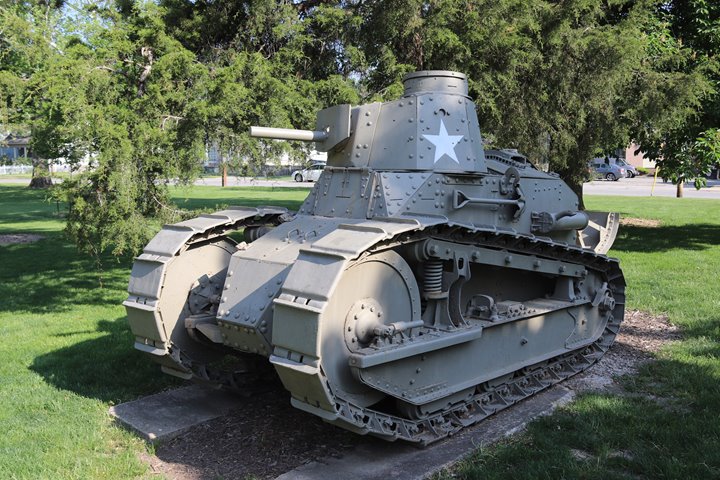
The M1917 two-man light tank was based on
the French Renault FP-17. This M1917 6-ton tank is on display at
Miller Park in Bloomington, IL. Author's photo.
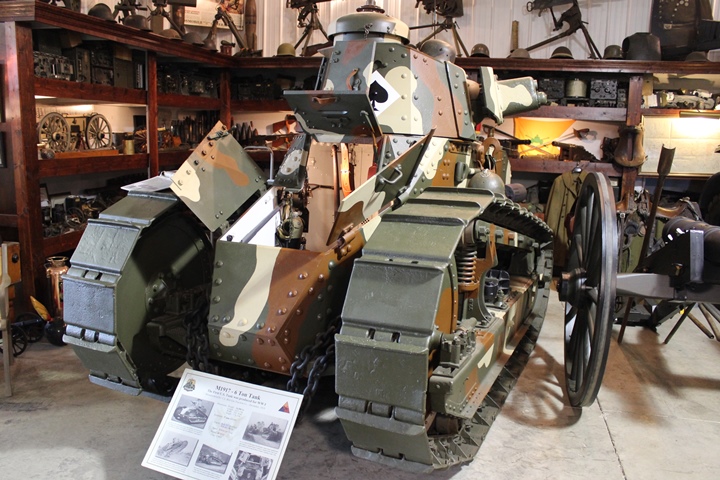
This M1917 was photographed at the former Ropkey
Armor Museum in Indiana. The museum is now closed; and the location of
the tank is unknown. Author's photo.
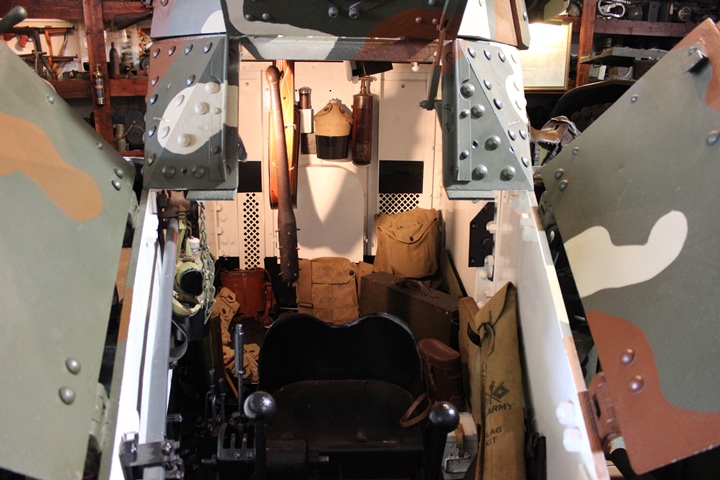
The former display allowed visitors to view
the driver's area of the vehicle. Author's photo.
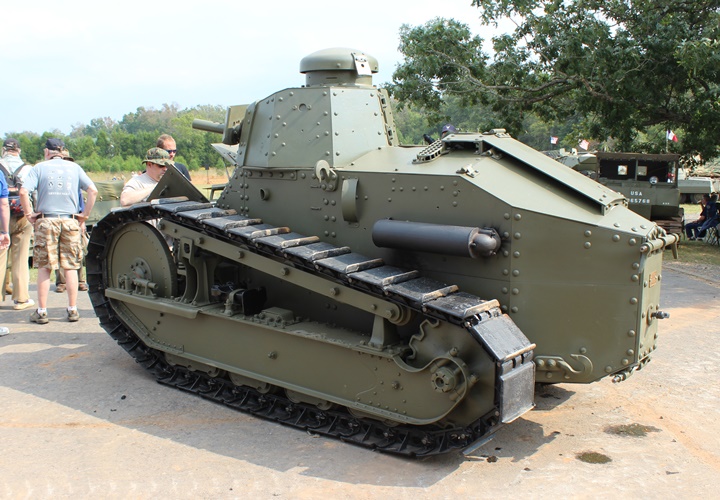
This M1917 is part of the collection of the
Virginia Museum of Military Vehicles. Author's photo.
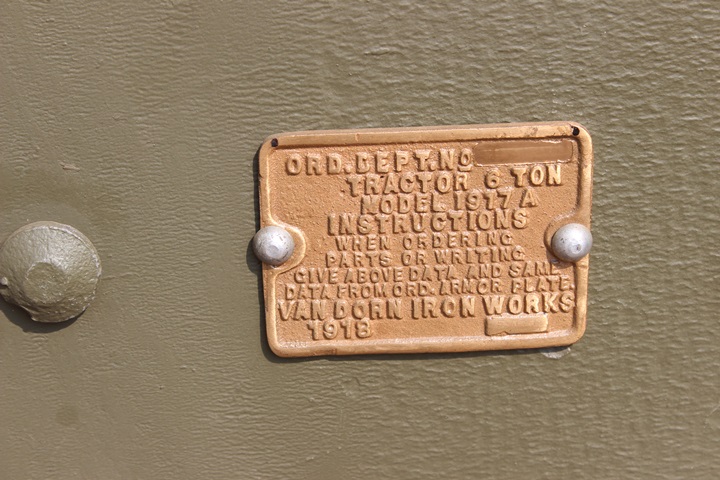
Author's photo.
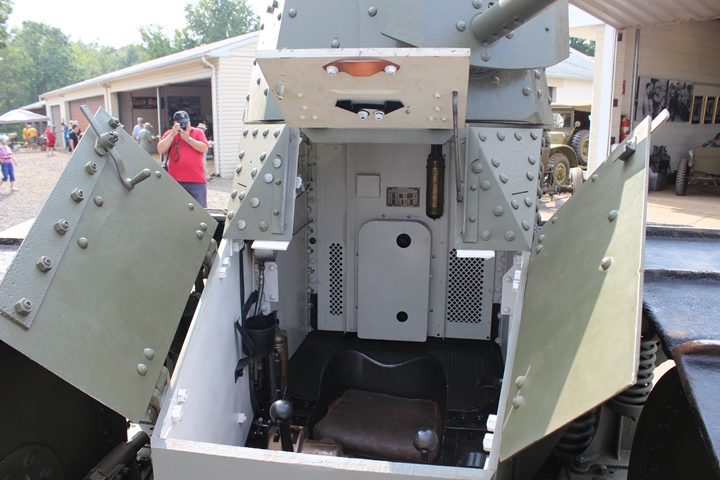
Author's photo.
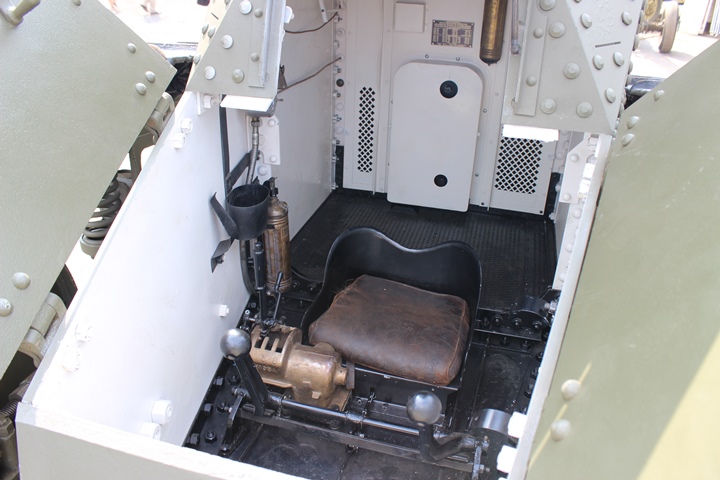
Author's photo.
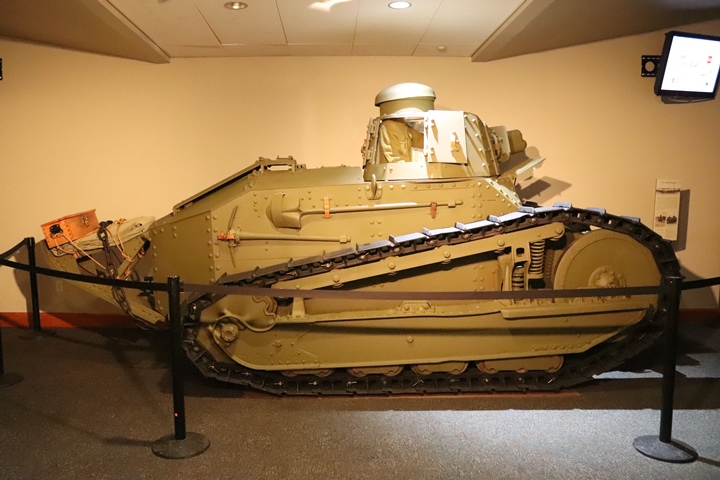
This M1917 is on display at the
National infantry Museum at Fort Benning, GA. Author's photo.
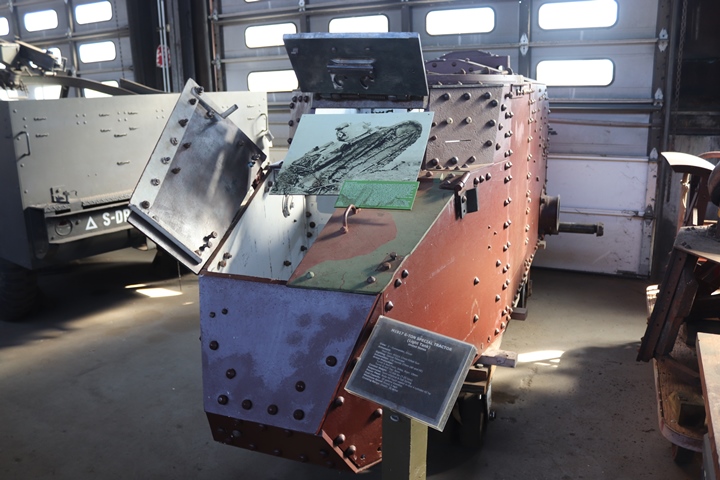
This M1917 six-ton tank was undergoing
restoration in September 2018 at Fort Benning. GA. It is part of
the National Armor and Cavalry Tank collection. Author's photo.
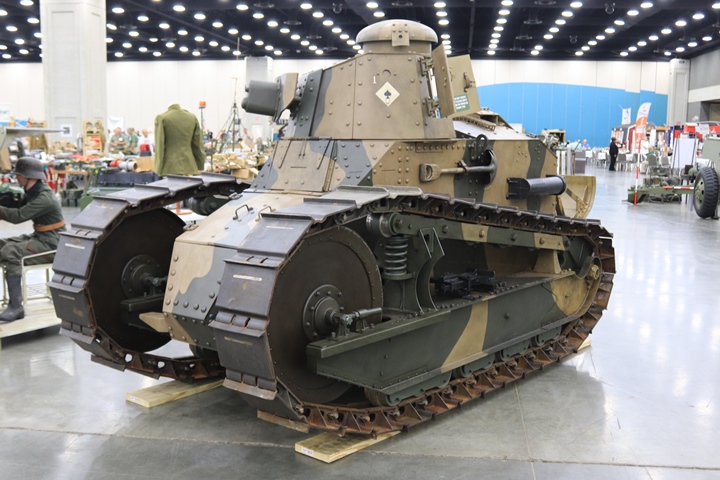
This M1917 is owned by the Indiana Military
Museum in Vincennes, IN. It was on display at the 2018 MVPA
National Convention in Louisville, KY. It is now on display in the
World War One diorama at the museum. Author's photo.
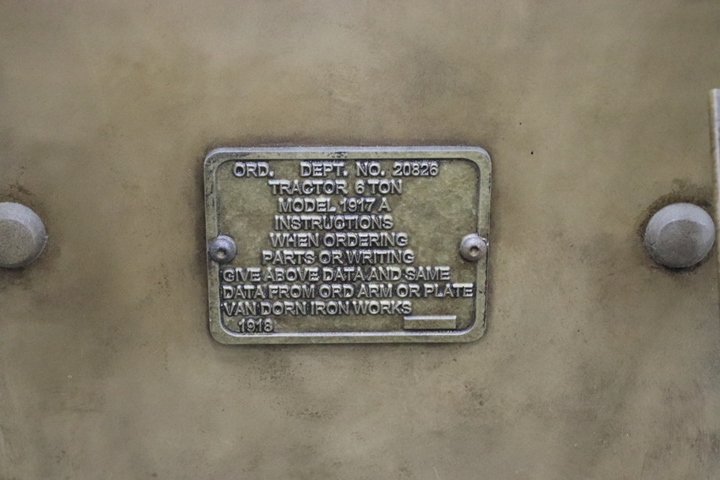
The Van Dorn Iron Works of Cleveland, OH
made armored plate during World War Two. This is Ordnance
Department Number 20826. Author's photo.
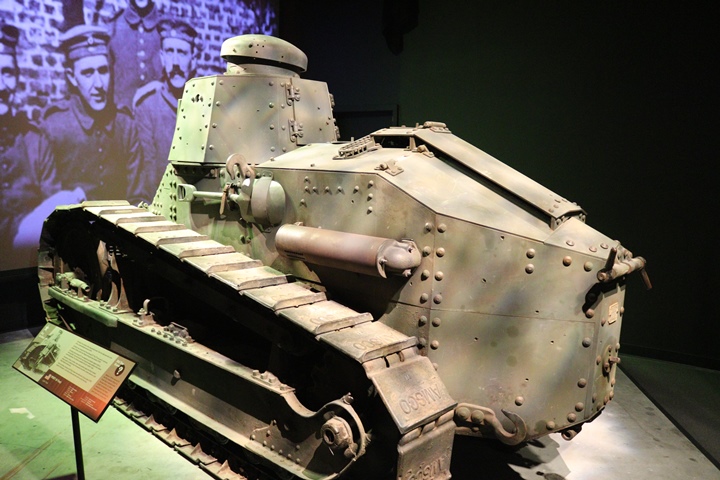
This is another Van Dorn-built M1917 and is
on display at the American Heritage Museum in Hudson, MA. Author's
photo.
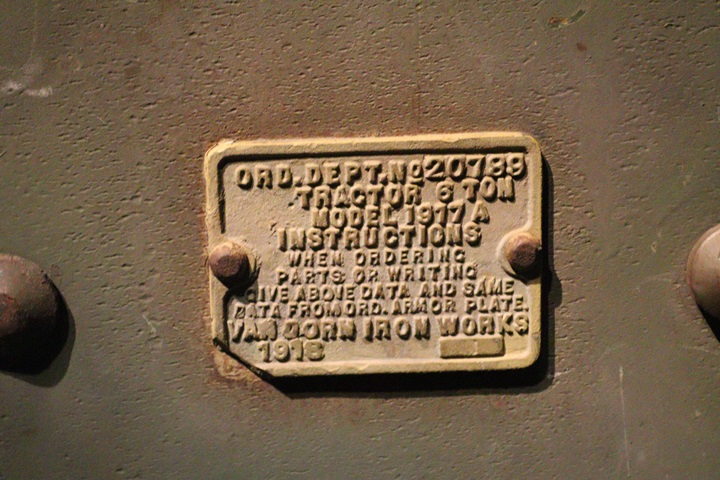
This one is Ordnance Department
Number 20789. Author's photo.
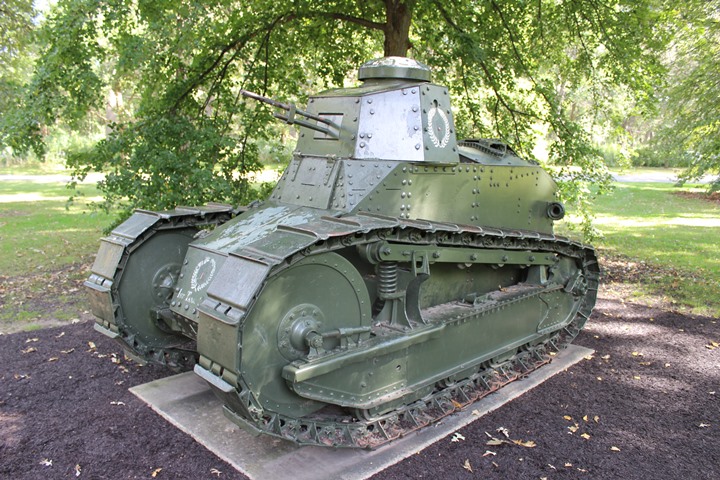
The First Division Museum in Wheaton, IL has
this M1917 on outside display. Author's photo.
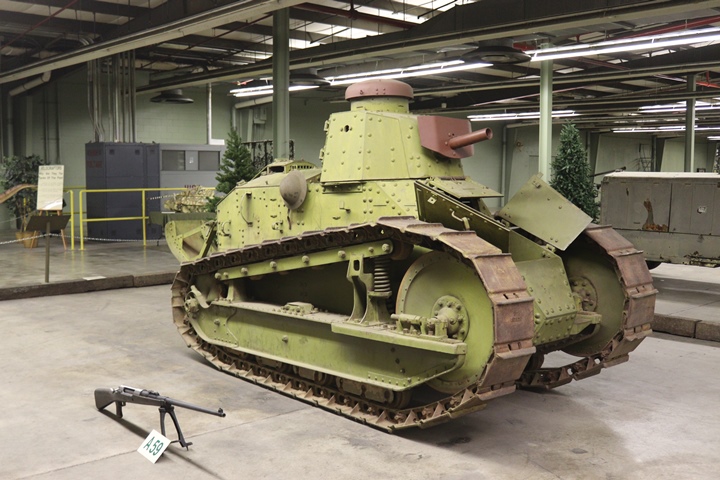
This Holt-built M1917 is one of the
many pieces of armor on display at the AAF Museum in Danville, VA.
Author's photo.
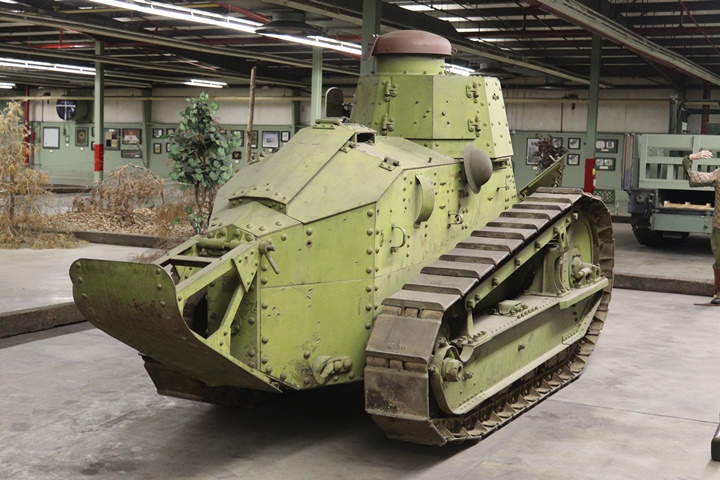
The data plate can just be seen on the rear
of the tank. The information placard for this vehicle notes this
as a Holt-built unit. Author's photo.
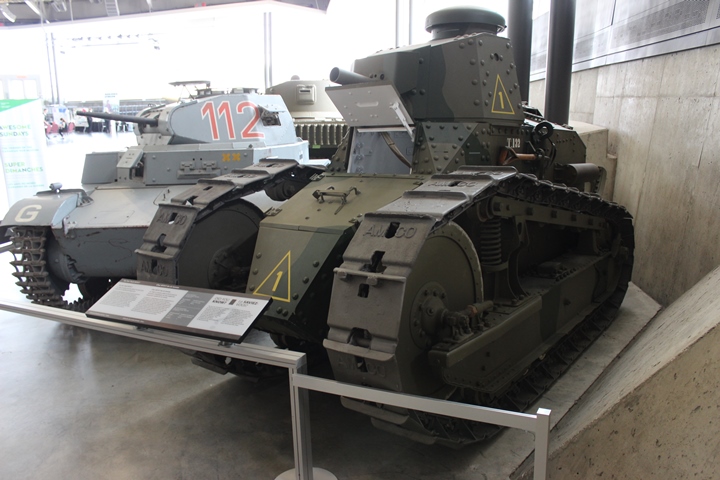
This M1917 is on display at the Canadian War
Museum in Ottawa, ONT. Author's photo.

This 1926 TTSW (Truck, Tractor, Six Wheel) 1-1/2-ton 6x6
truck is on display at the Army Transportation Museum. It used
many of the components of the Standard B truck of World War One.
This was one of many experimental trucks that were built after World War
One at Fort Holabird, MD that eventually led to the 2-1/2-ton 6x6 truck
of World War Two. The TTSW featured many of the suggestions that
resulted from the Trans-Continental Motor Train of 1919 led by LTC
Dwight D. Eisenhower. One of the suggestions was for the use of
pneumatic tires for driver comfort. The TTSW also featured a
walking beam rear suspension, dual rear tires, and separate drive shafts
for each rear axle. Author's photo.
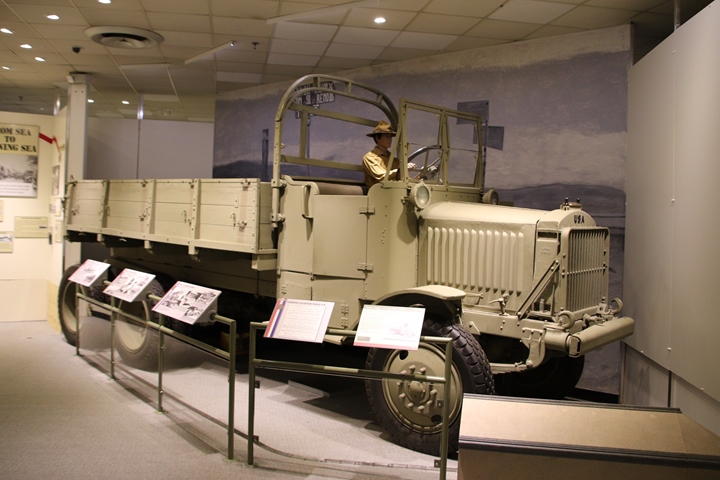
Author's photo.
British-Built Mark V* Heavy Tank:
This Mark V*, which is the only one of this Mark still in existence, has
been added as a special addition to this page due to its historic
nature. Operated by an American tank crew in World War One, it was
knocked out of action on September 29, 1918, with the loss of three of
the eleven man crew. It was photographed in the restoration
building for the U.S. Army Armor and Cavalry Collection at Fort Benning,
GA.
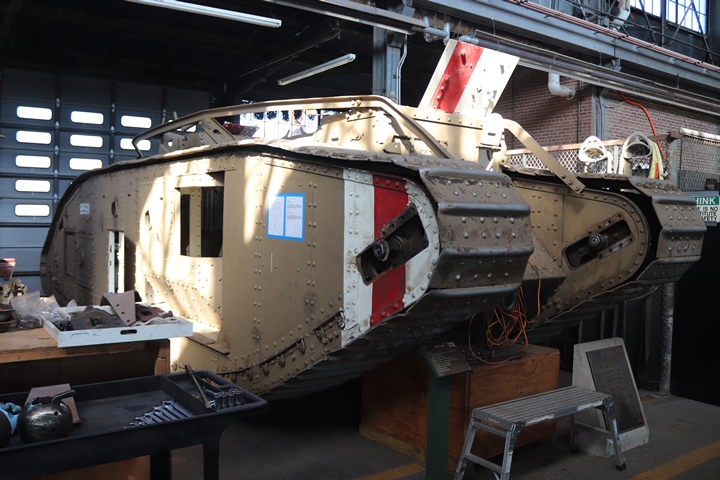
This is serial number 9591. Author's
photo.
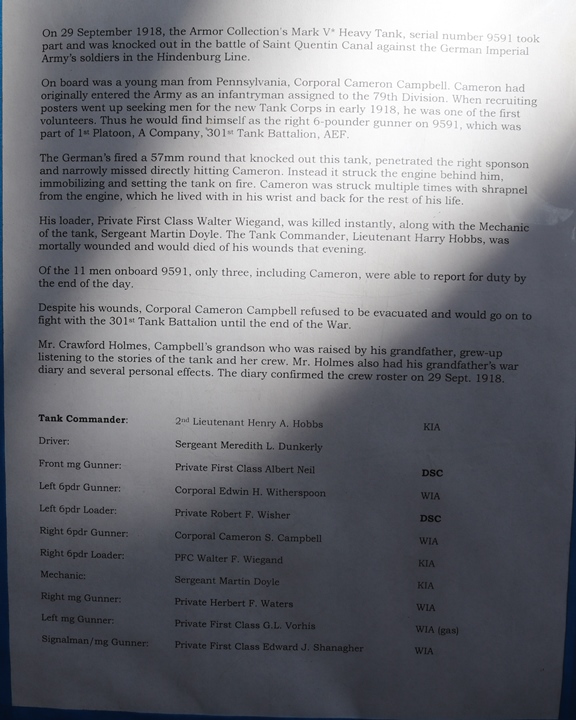
This was attached to the side of Mark V*
serial number 9591. Author's photo.
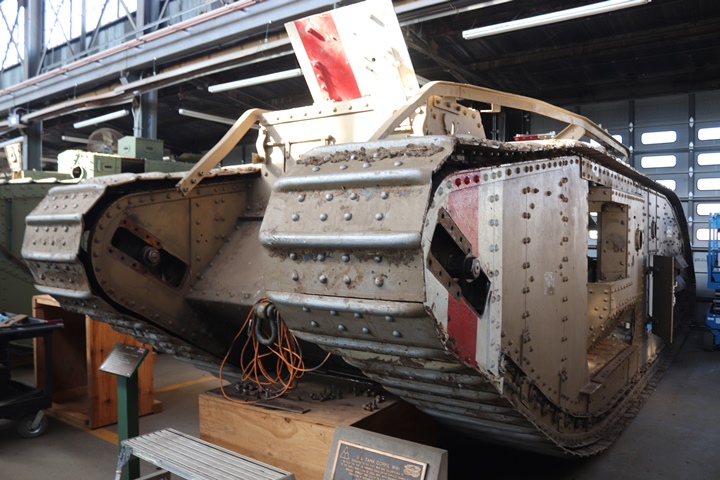
Author's photo.
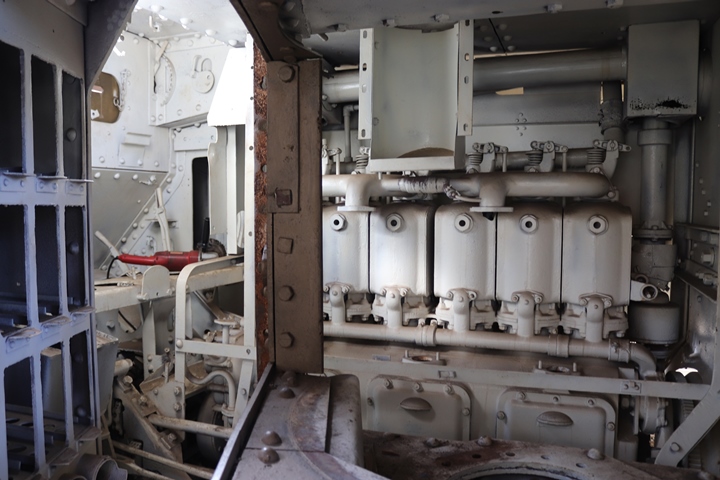
This is looking through the opening on the
port side of the vehicle. Author's photo.
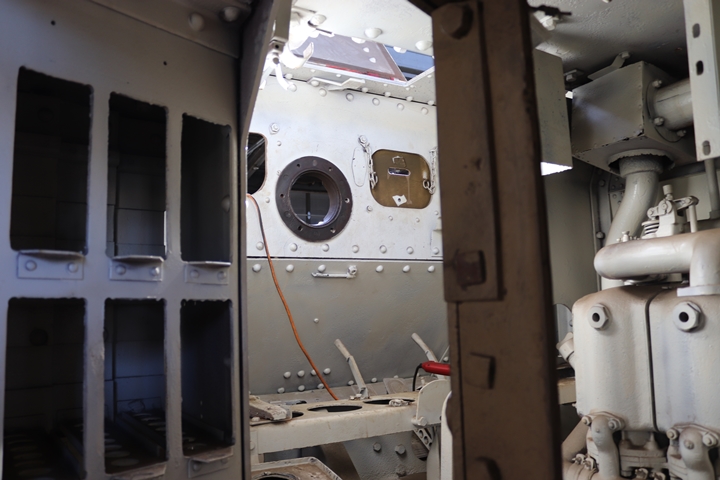
Author's photo.
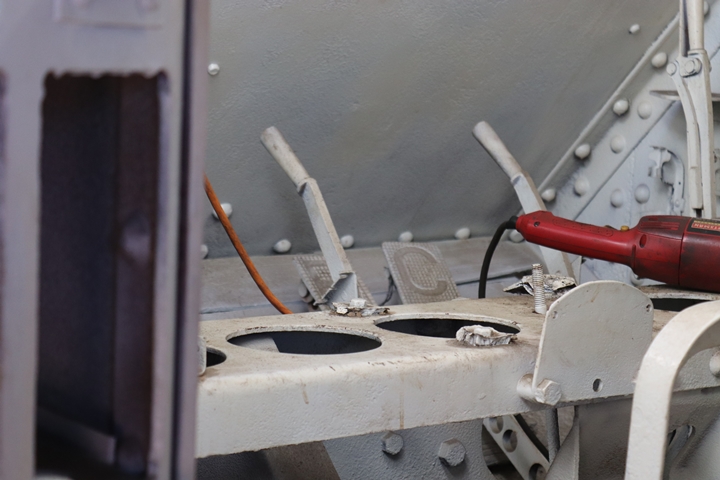
Seats had not yet been installed for the
driver and machine gun operator. The driver would sit in the
locations of the electric drill. Author's photo.
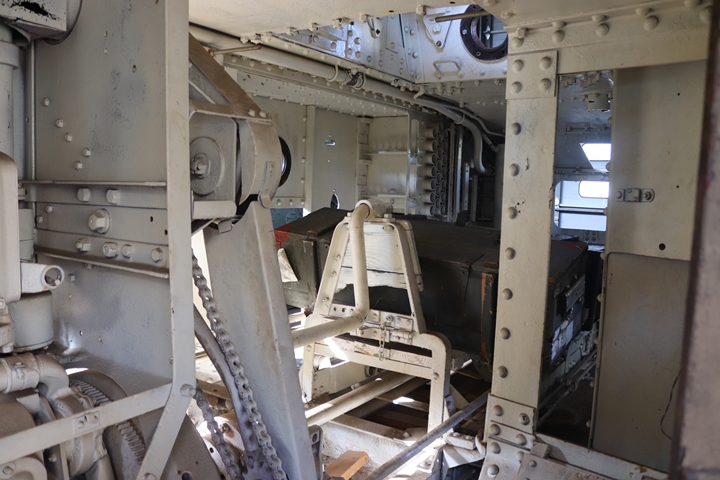
This is looking towards the rear of the
vehicle. There are a lot of moving parts inside that a
crewman could get hung up on or entangled in if he was not careful.
Author's photo.
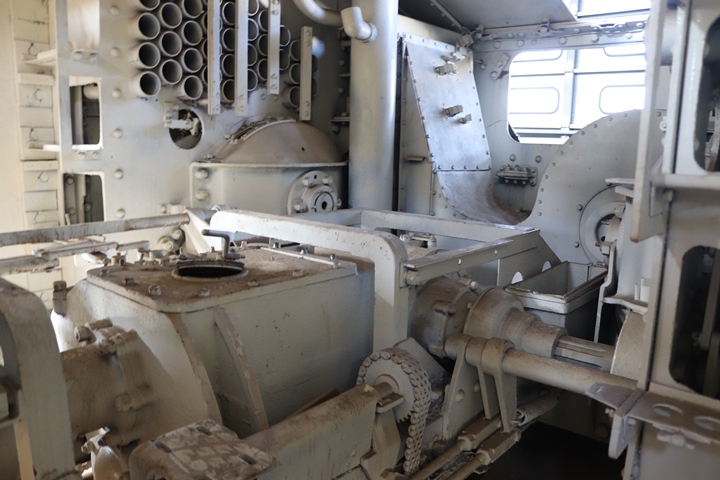
This is the aft section of the Mark V*.
Author's photo.
|




















































-126w-1.jpg)







































